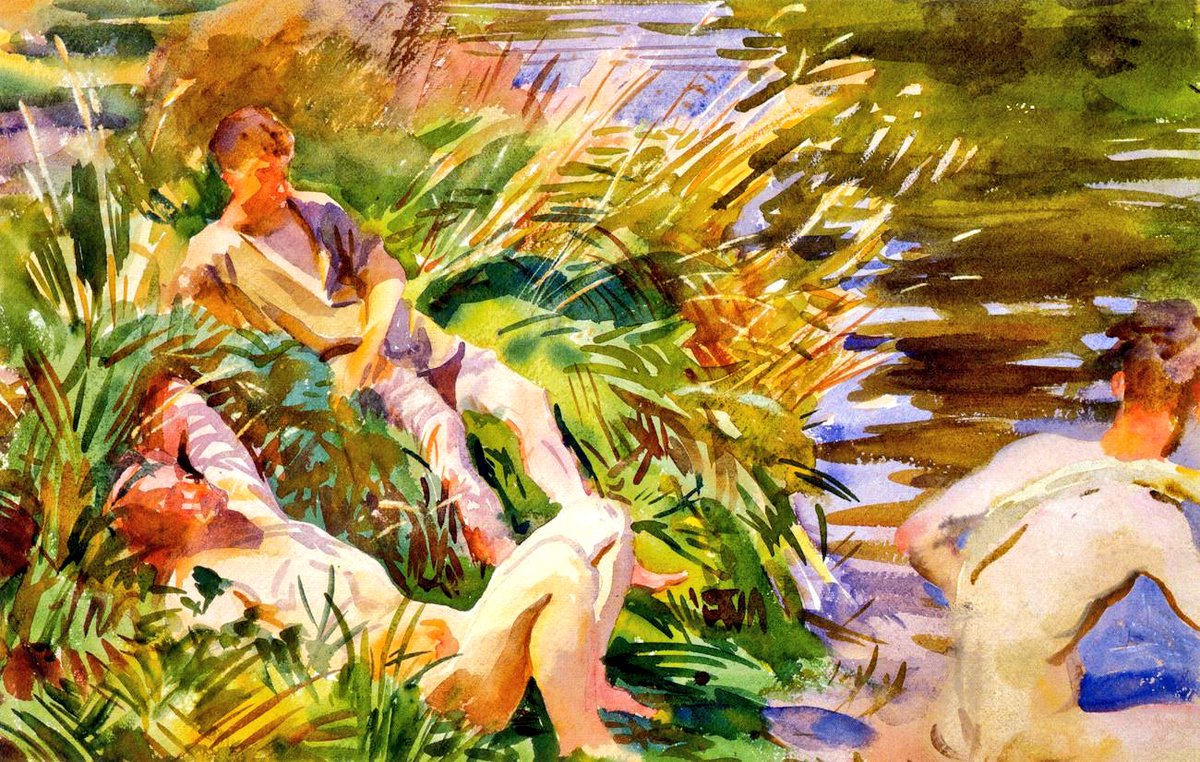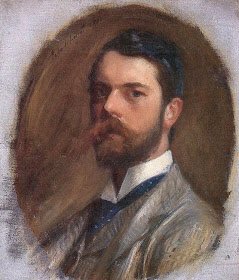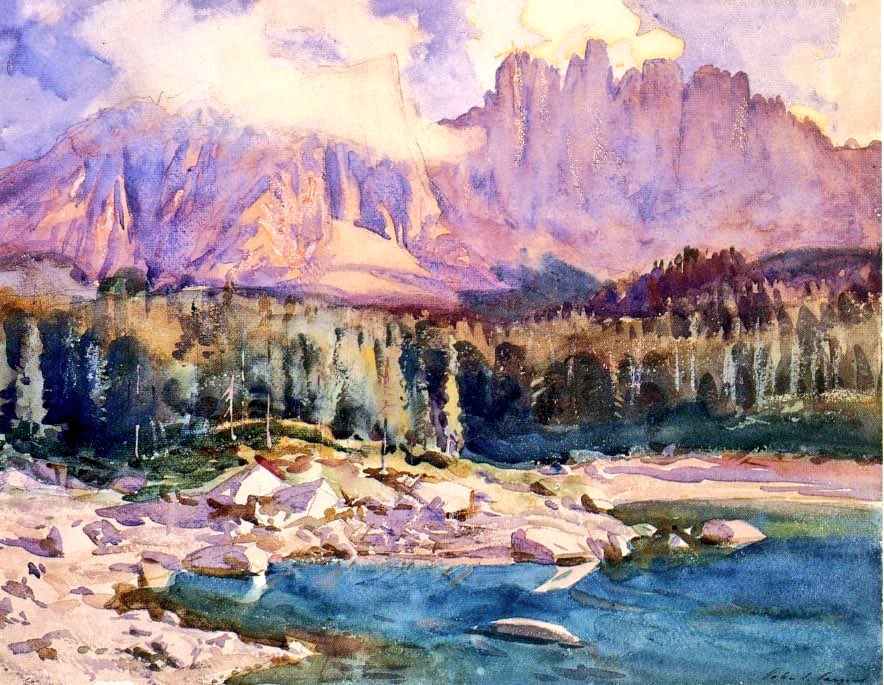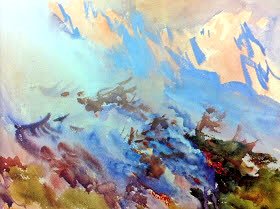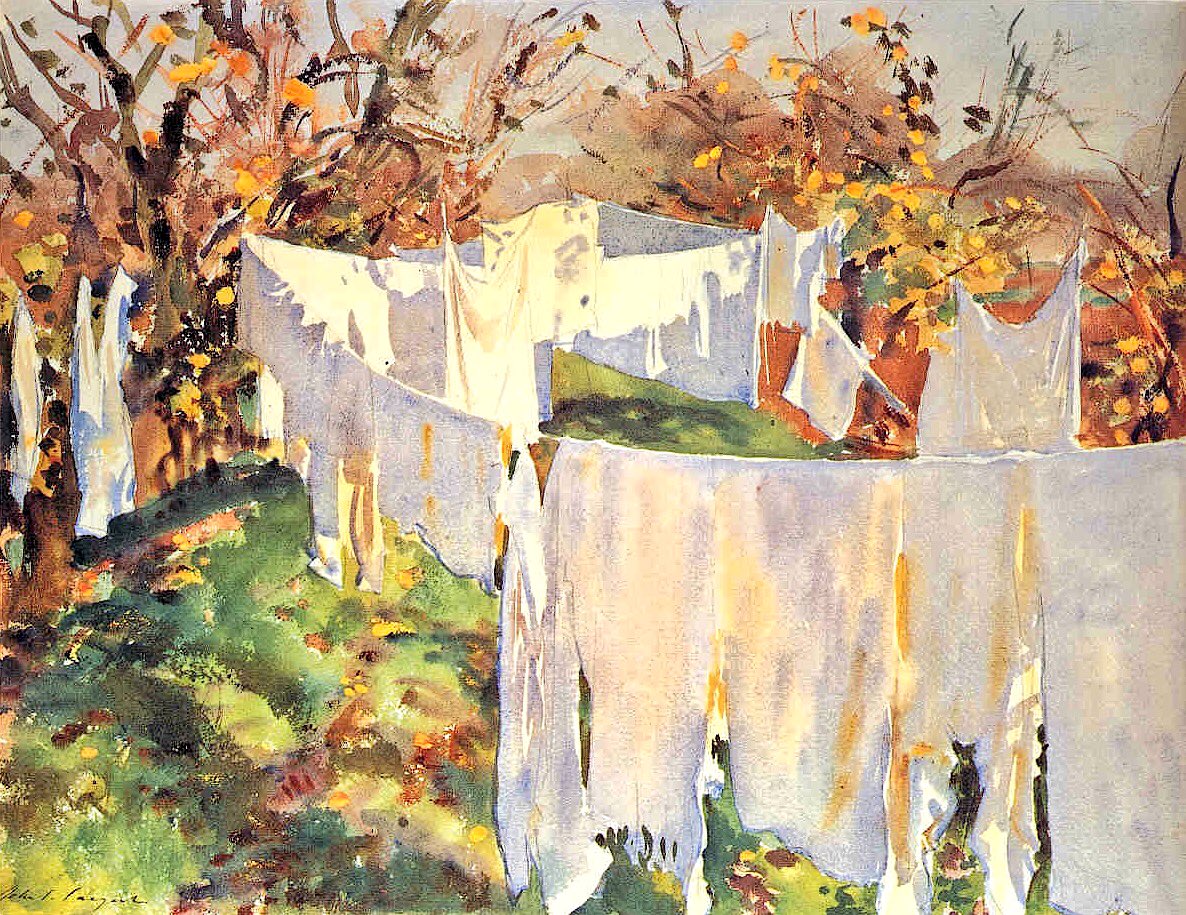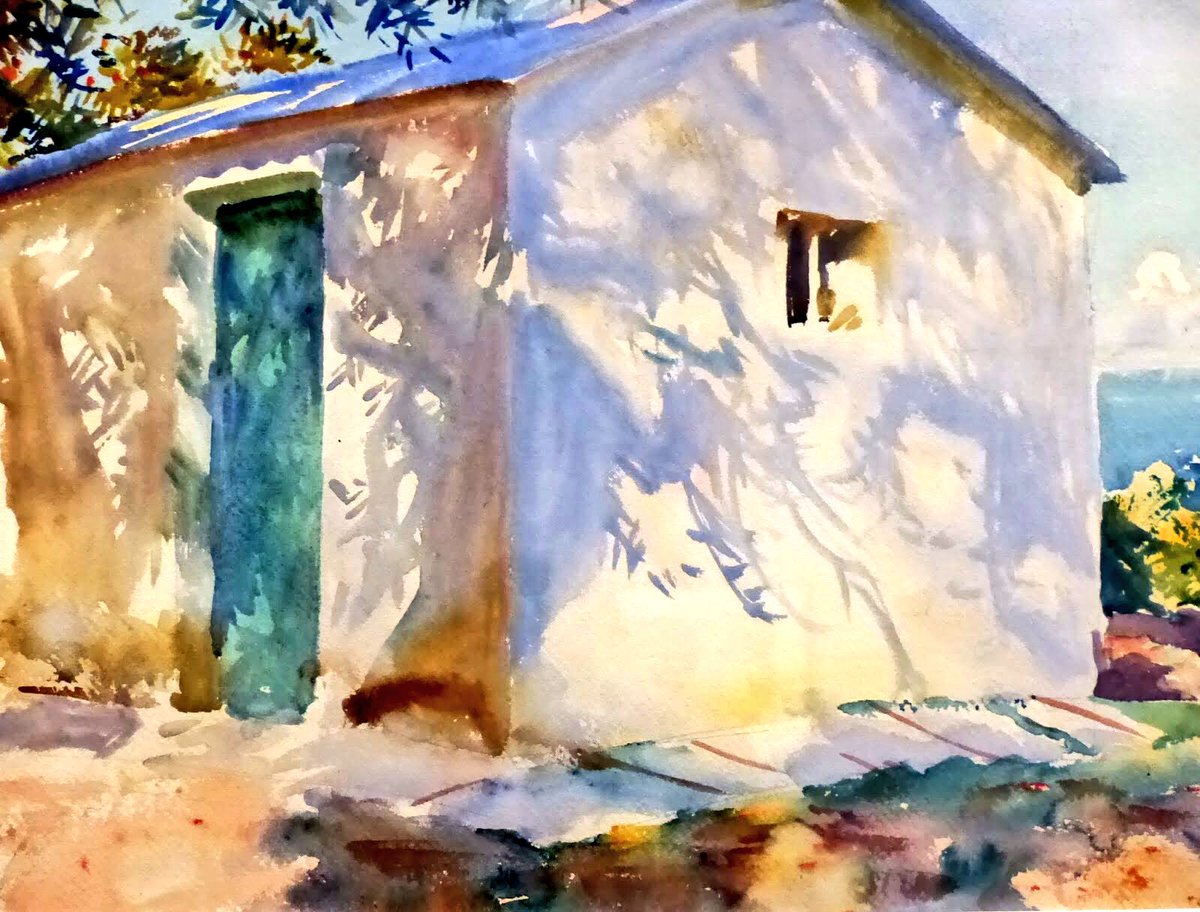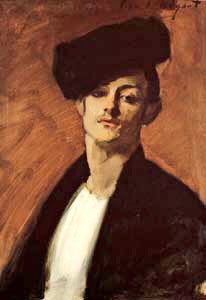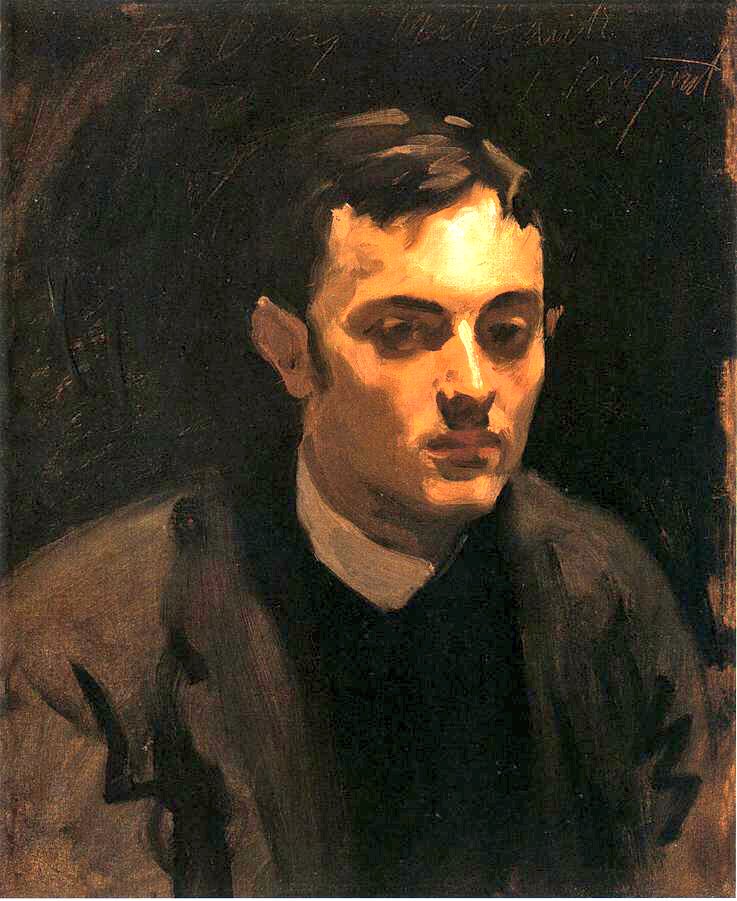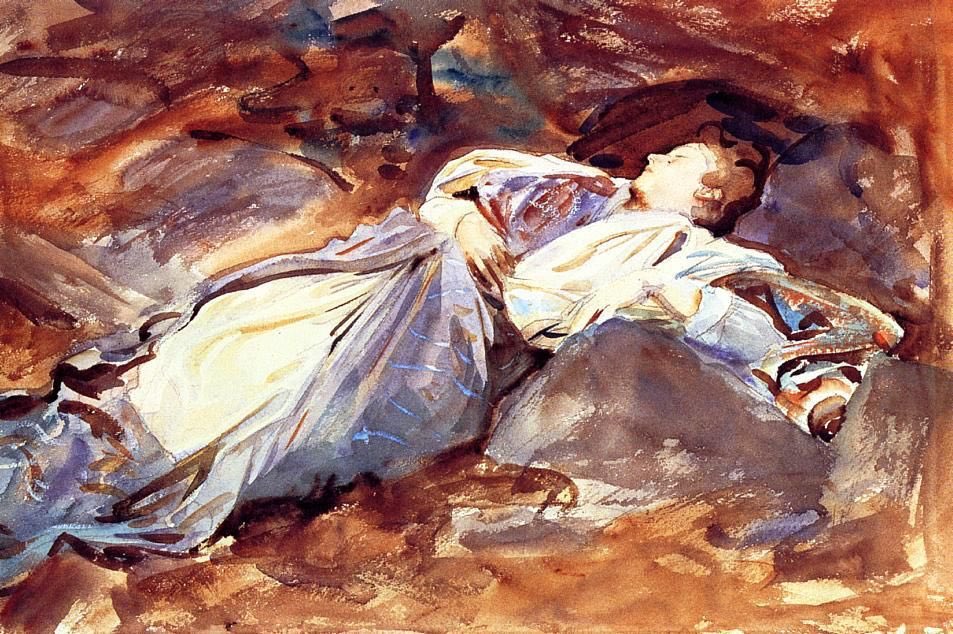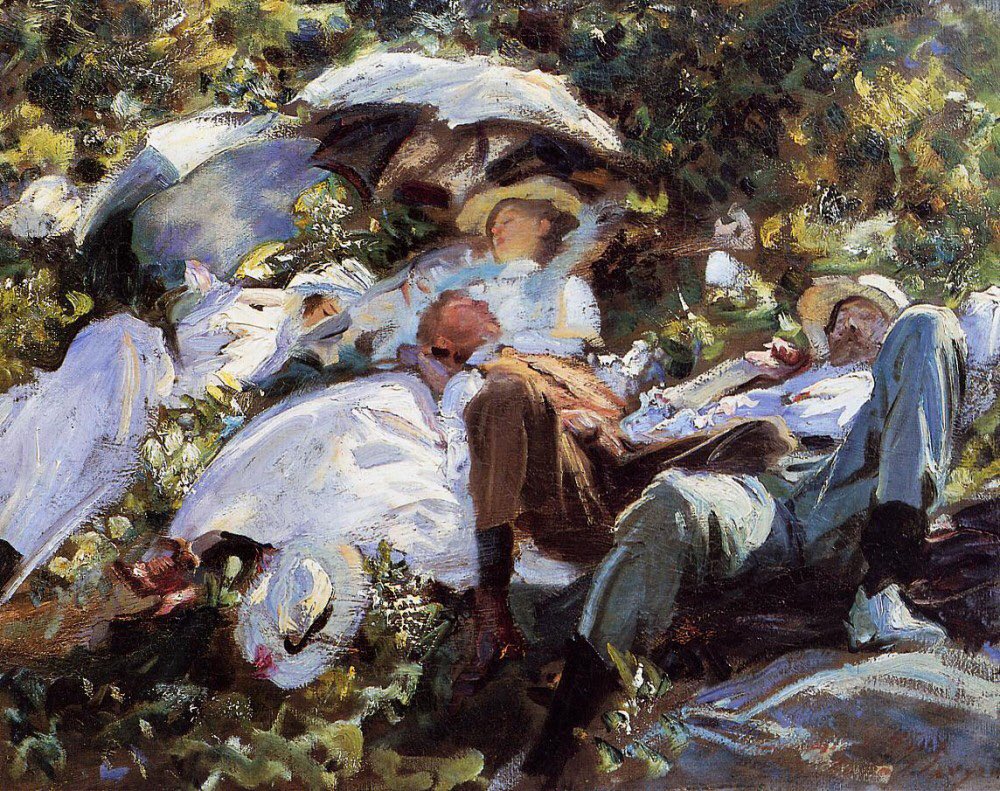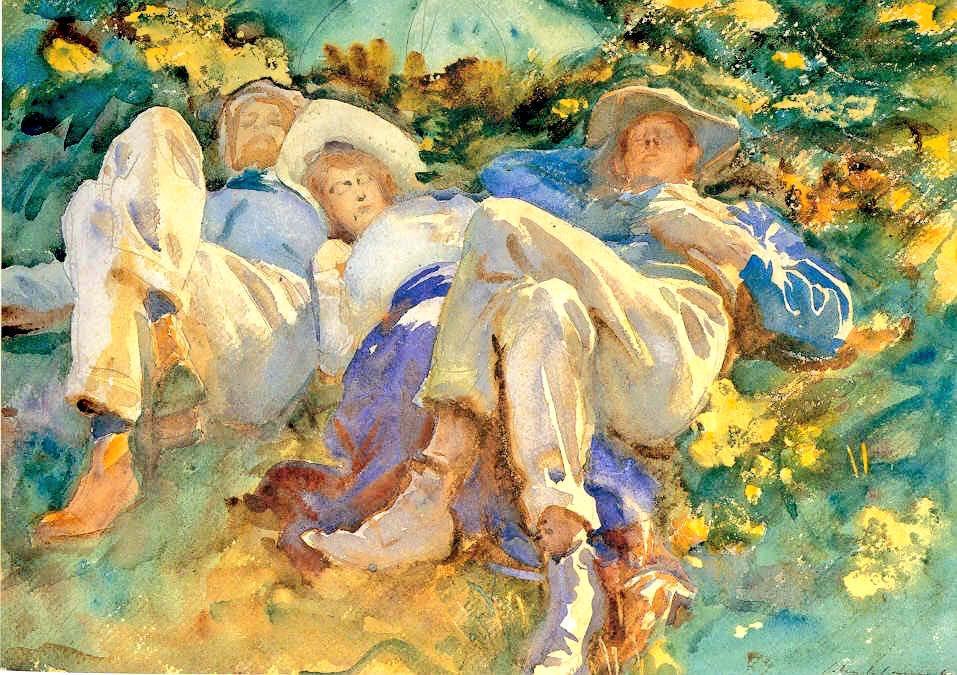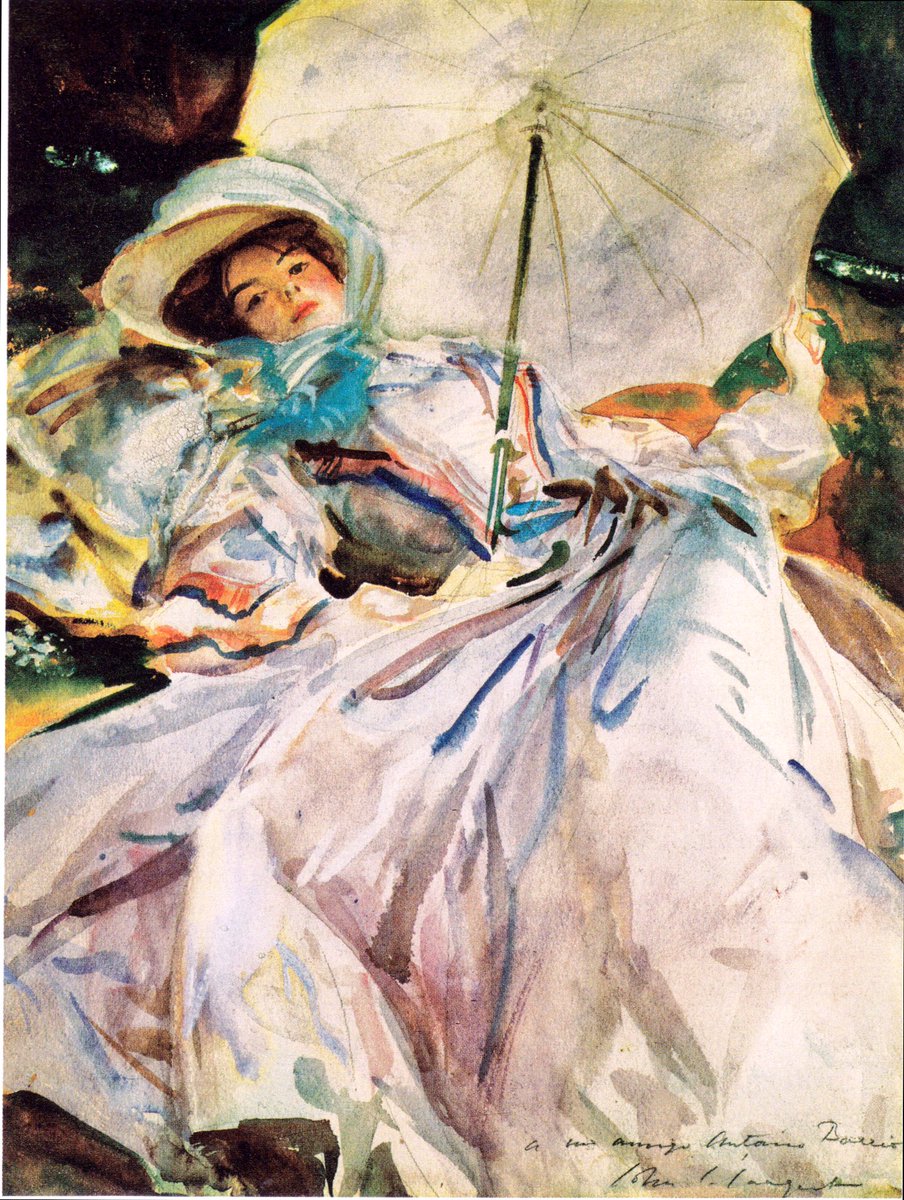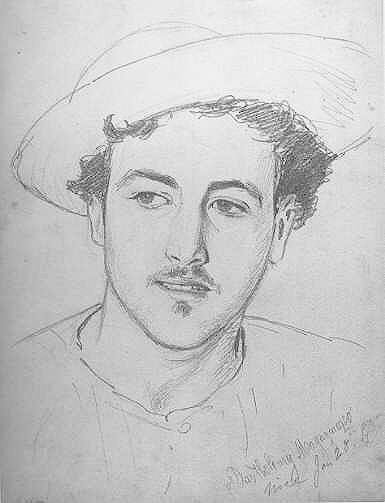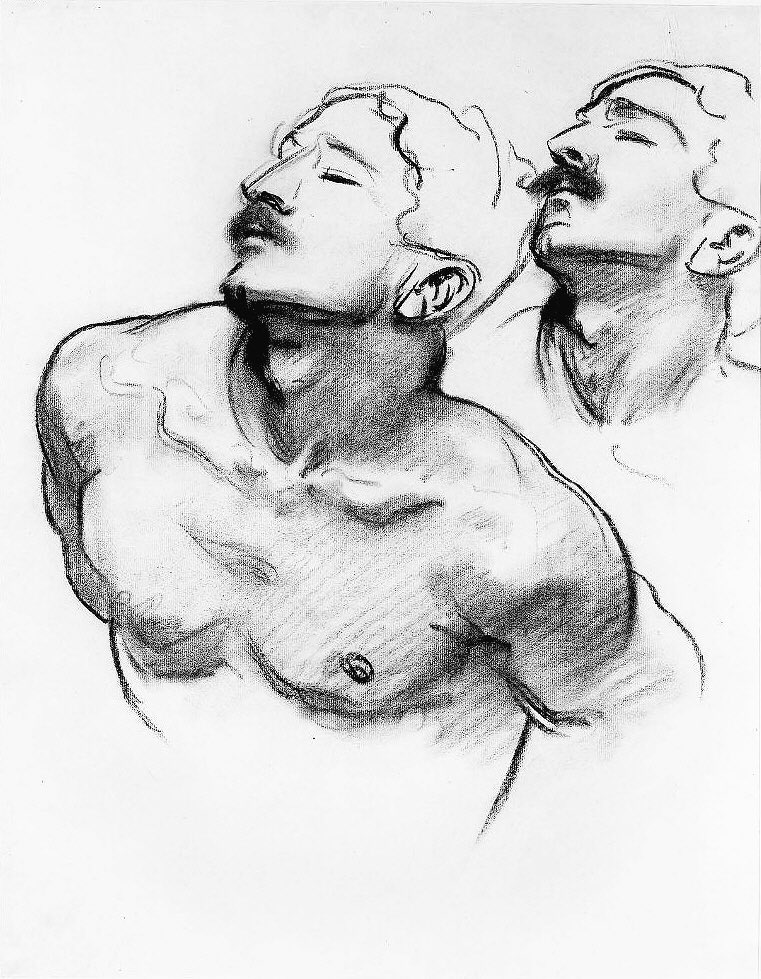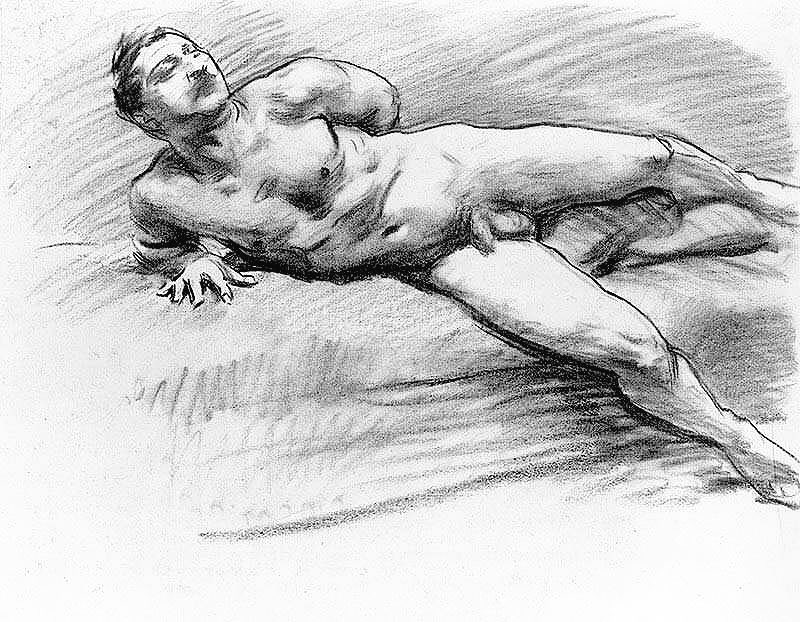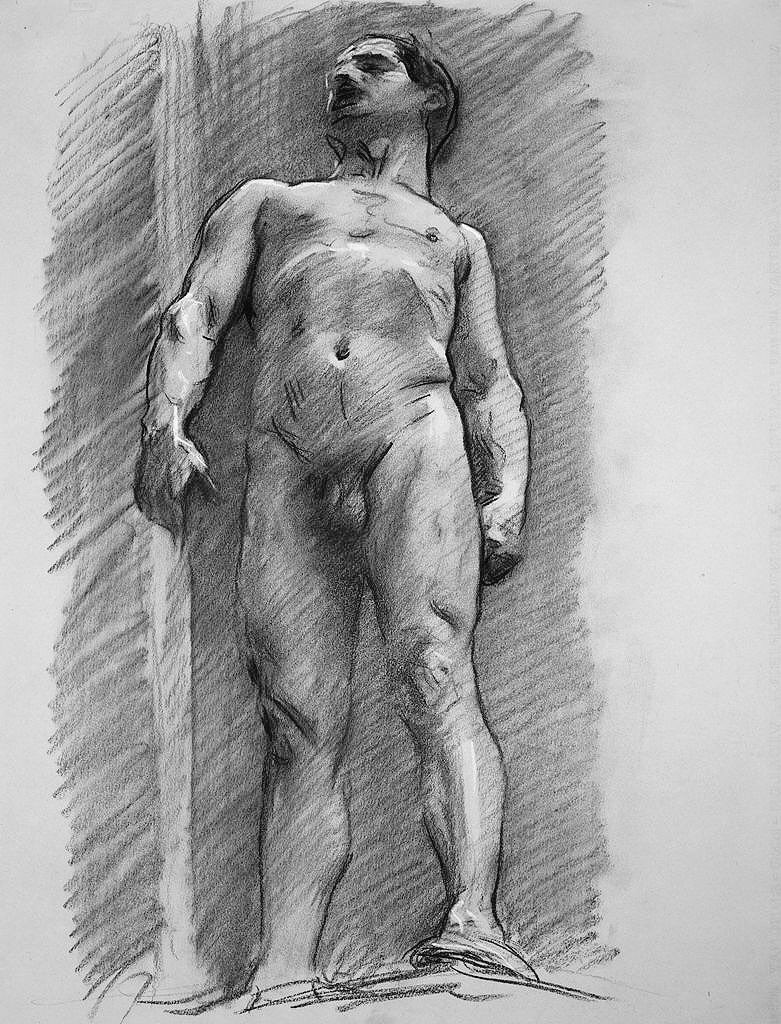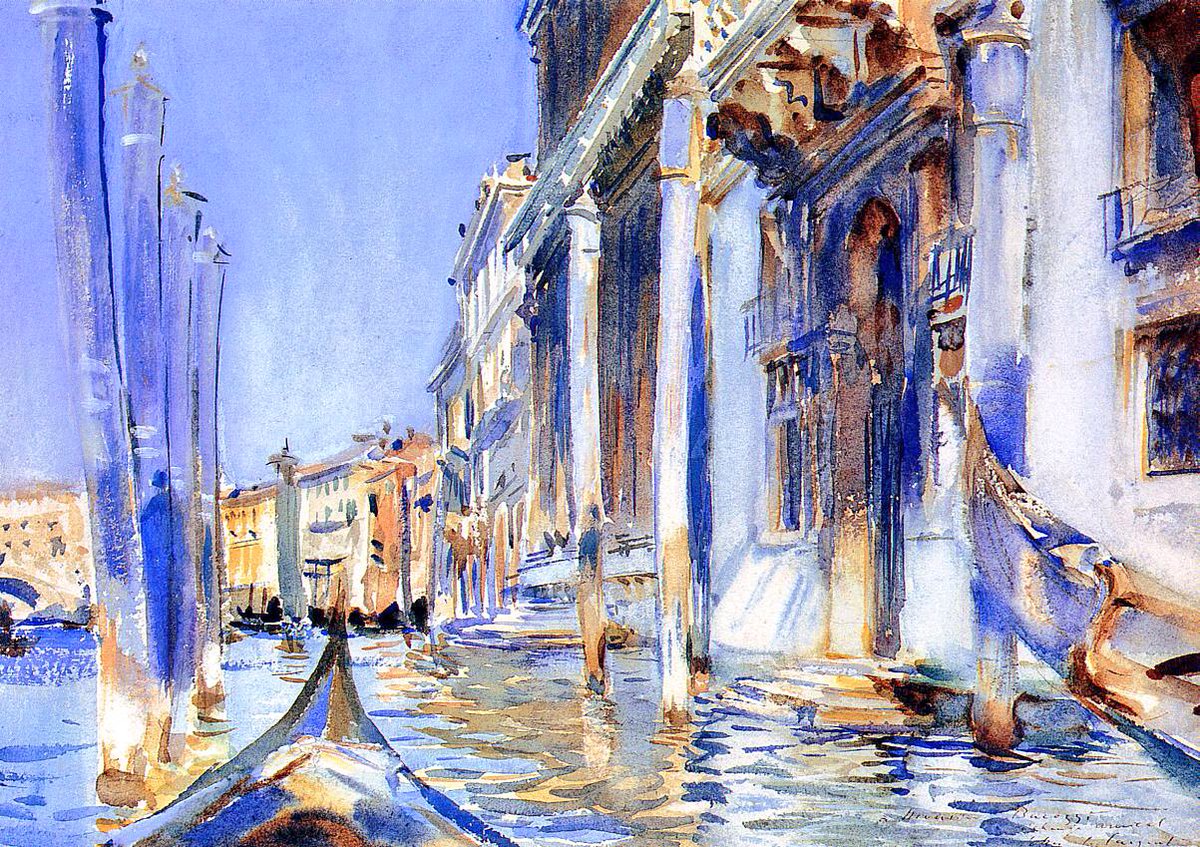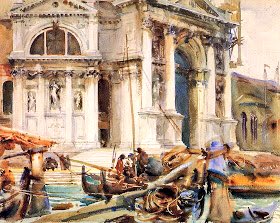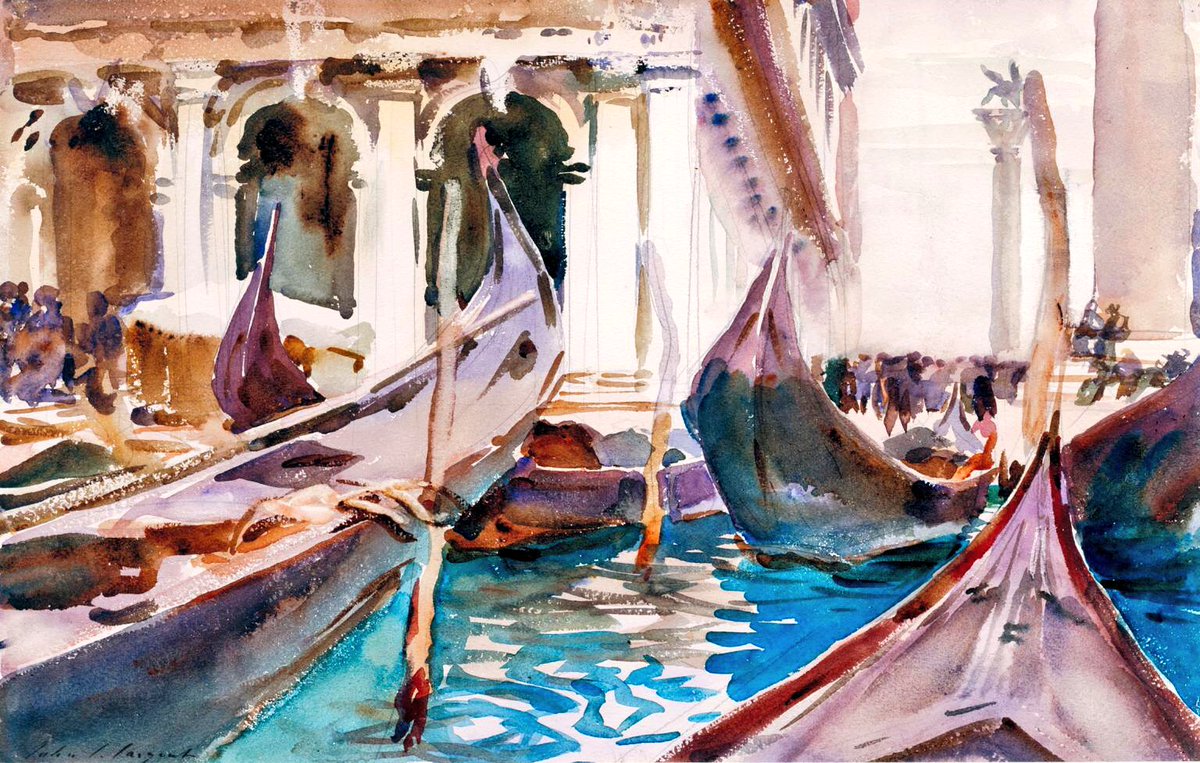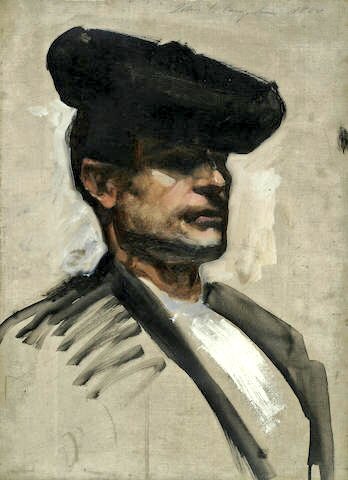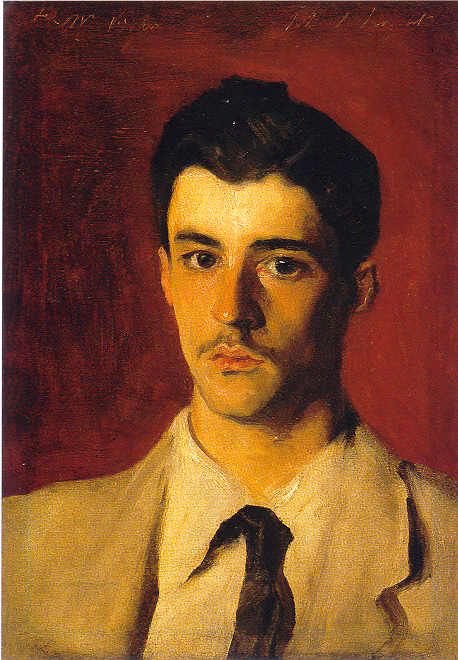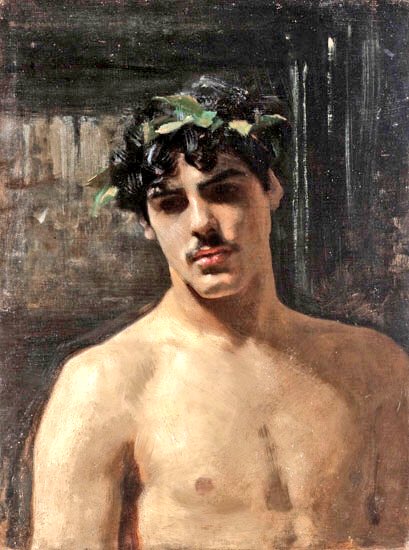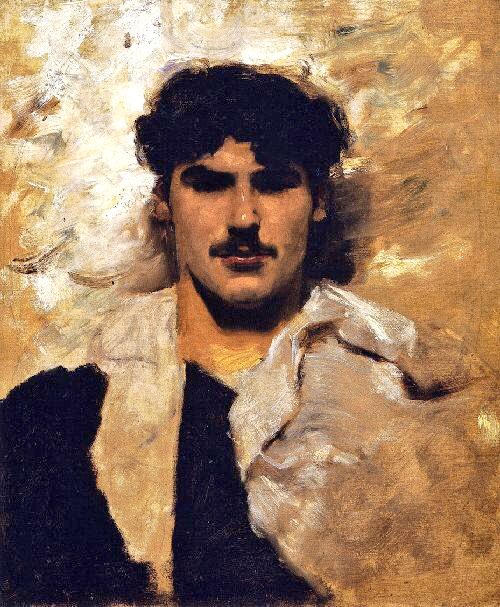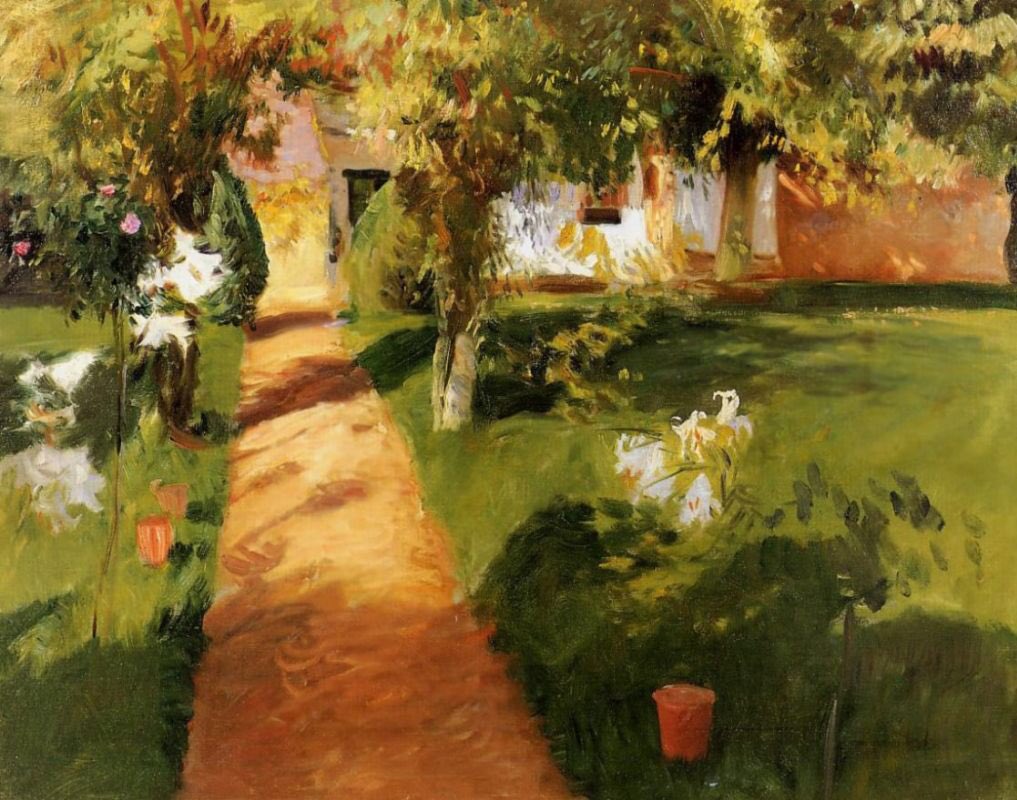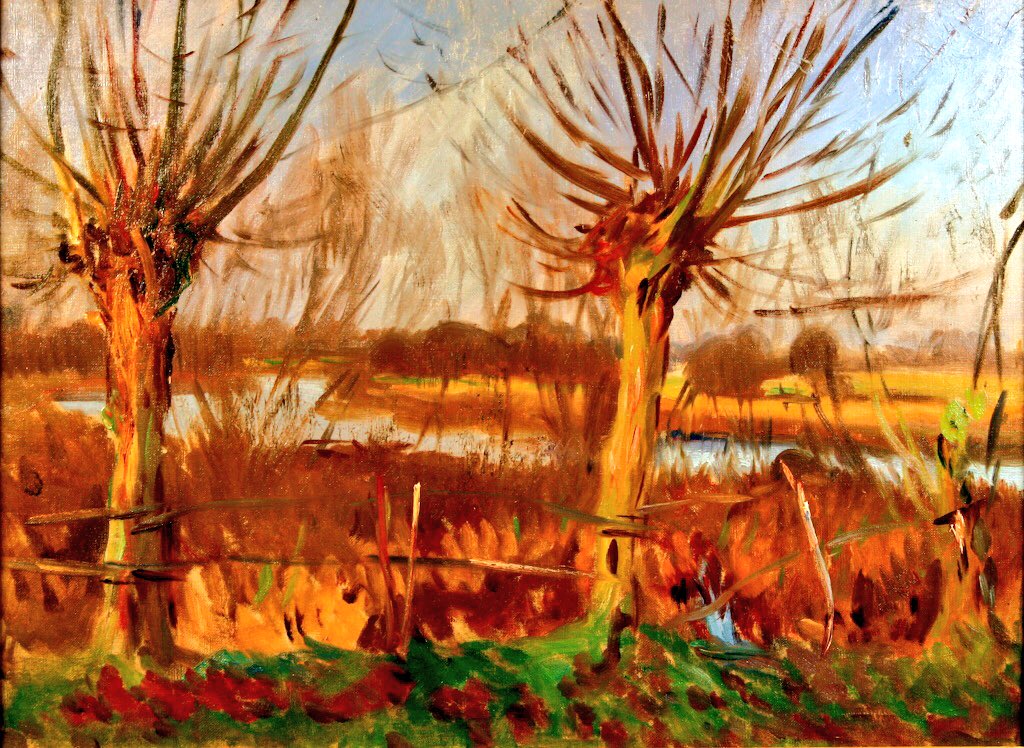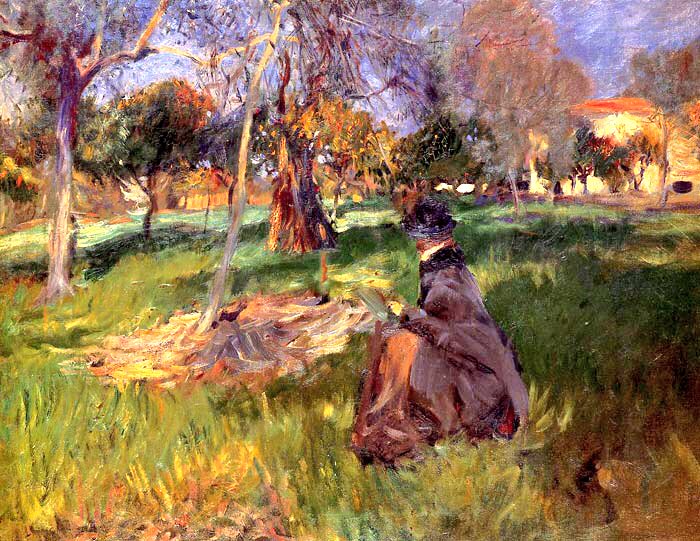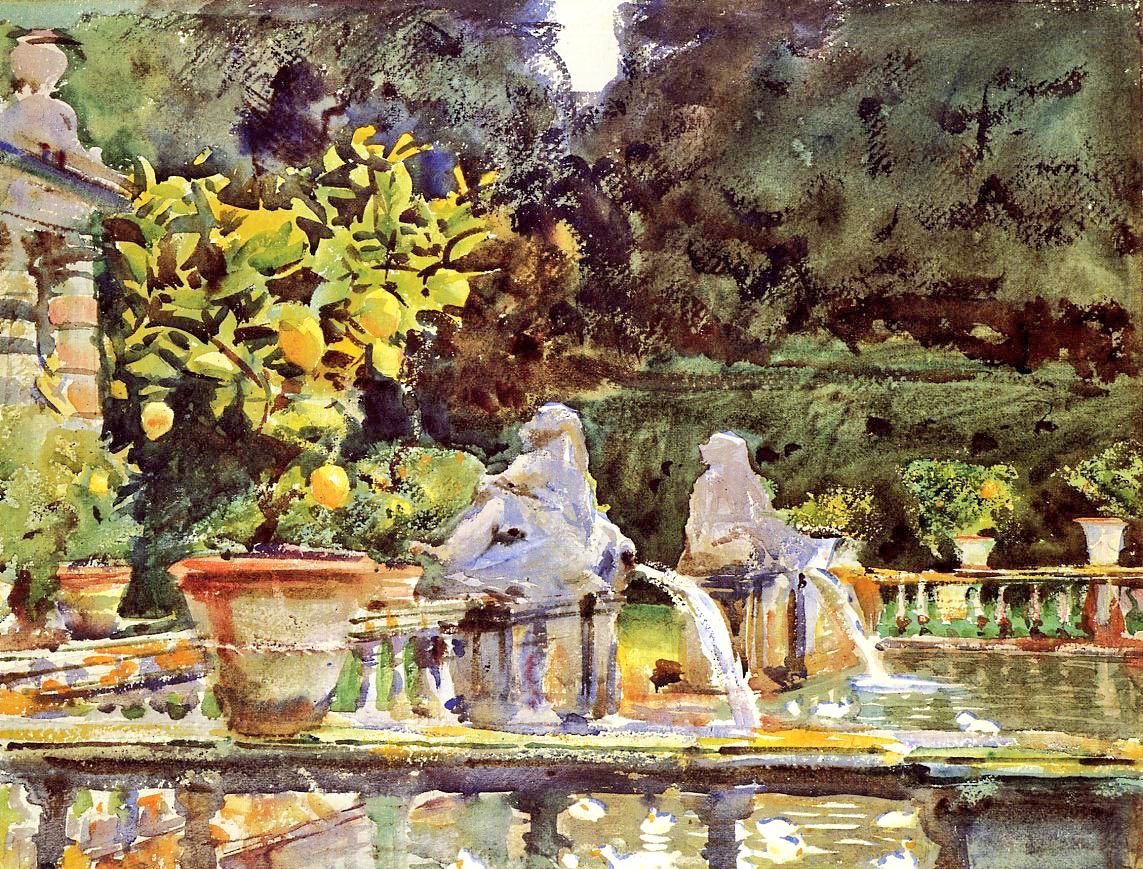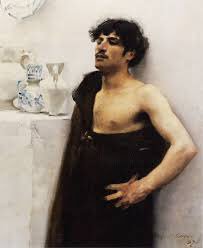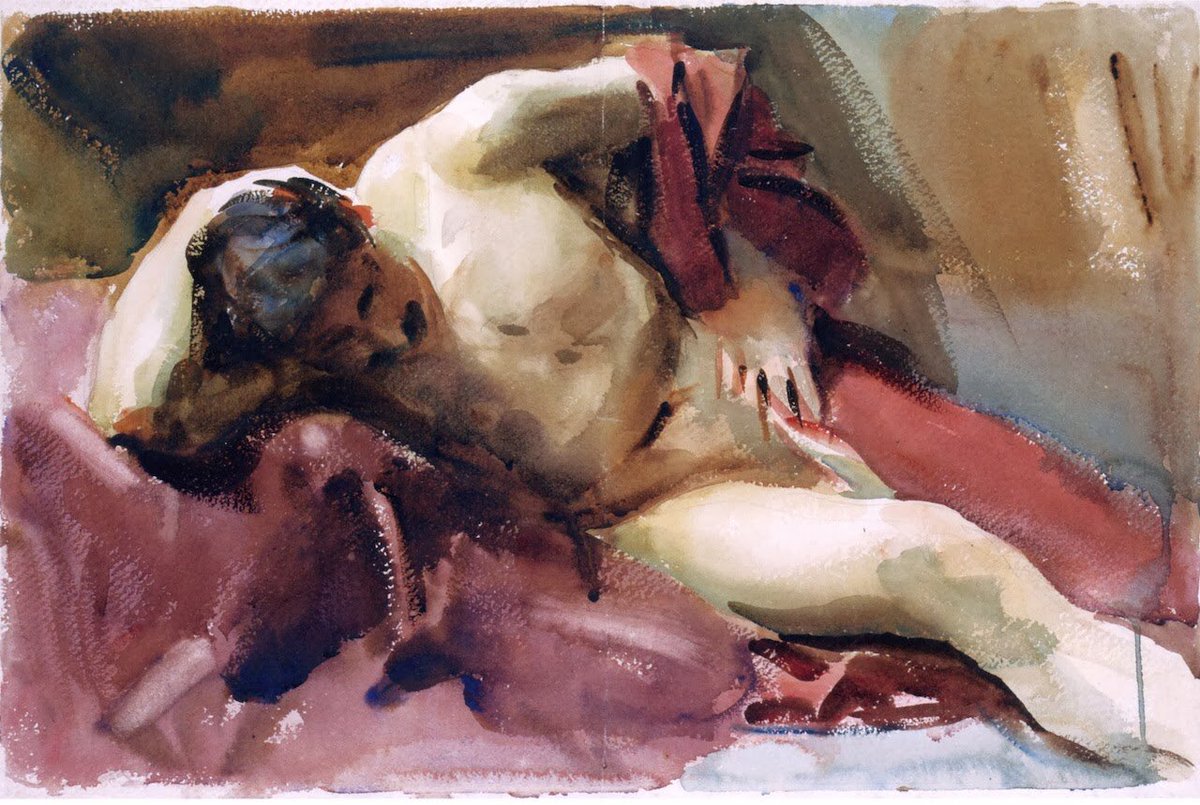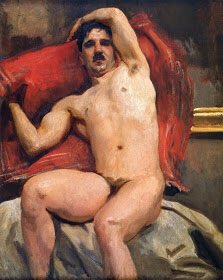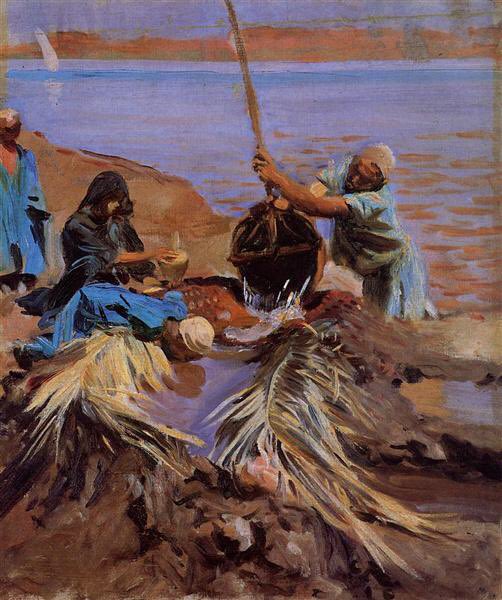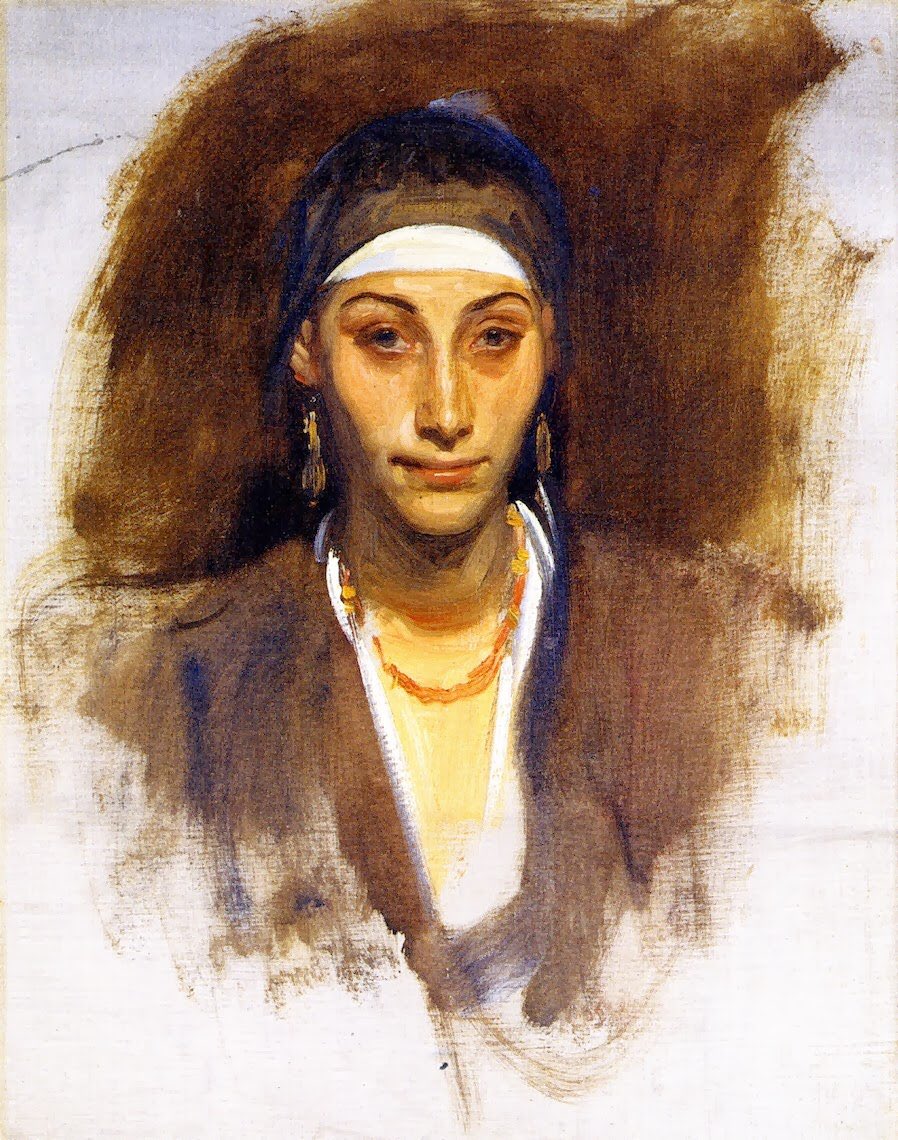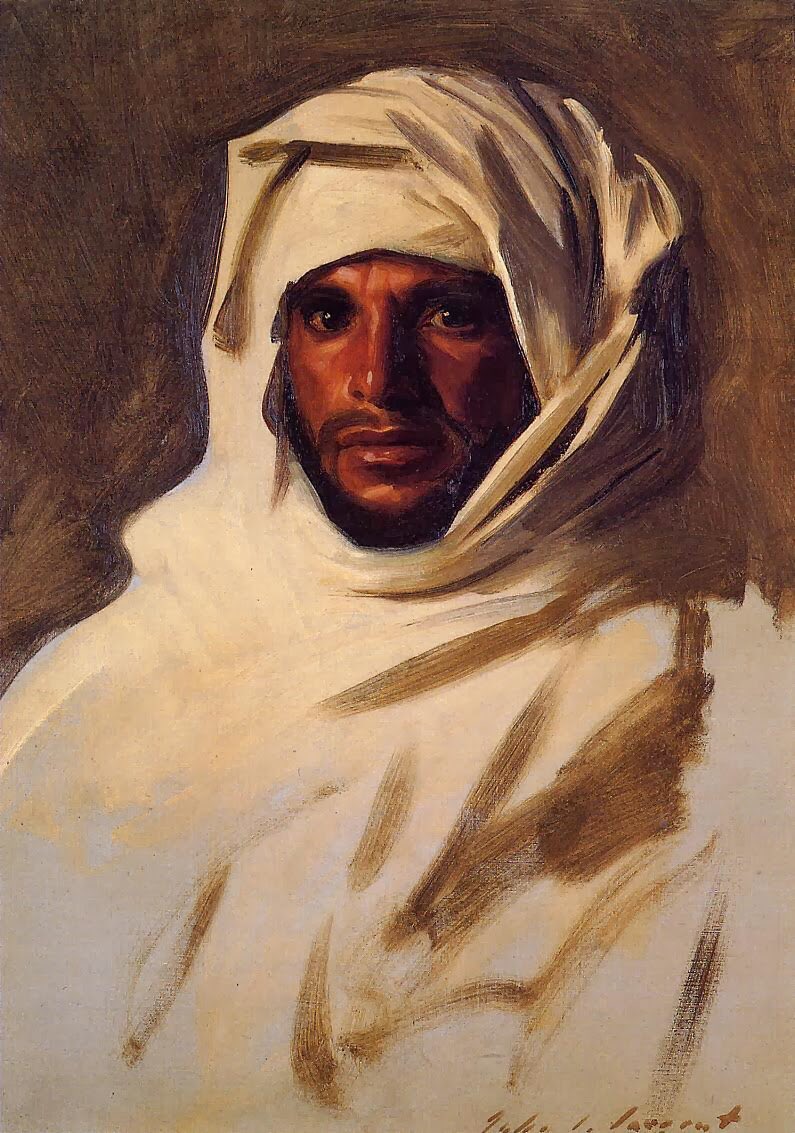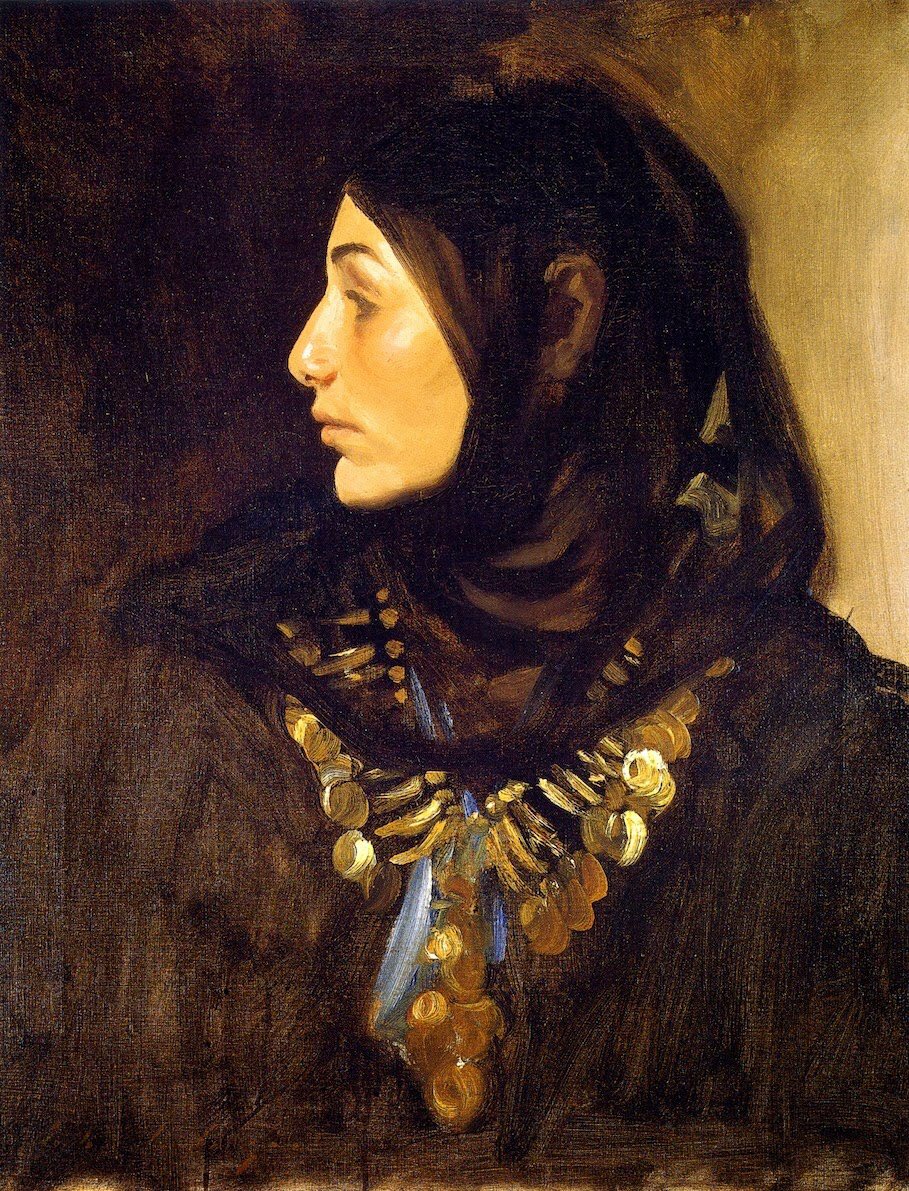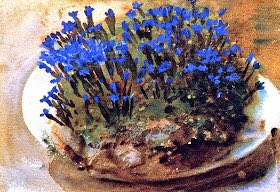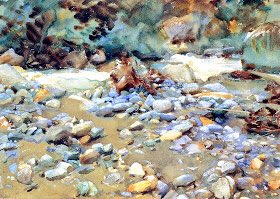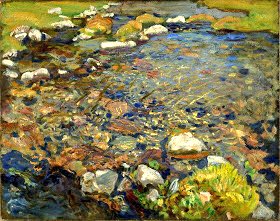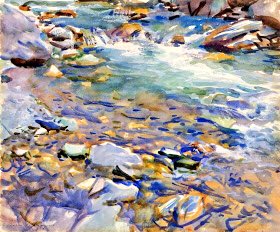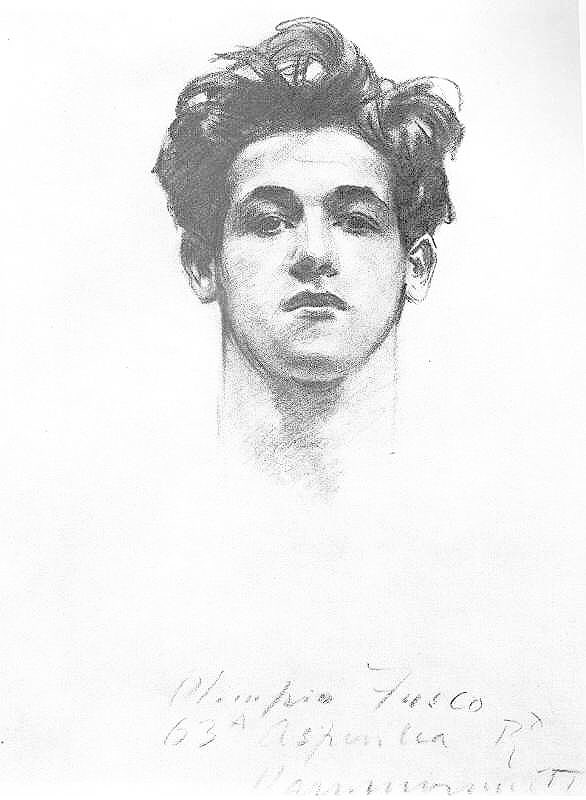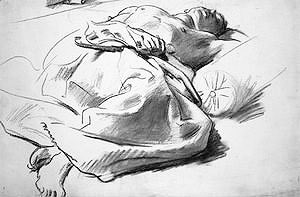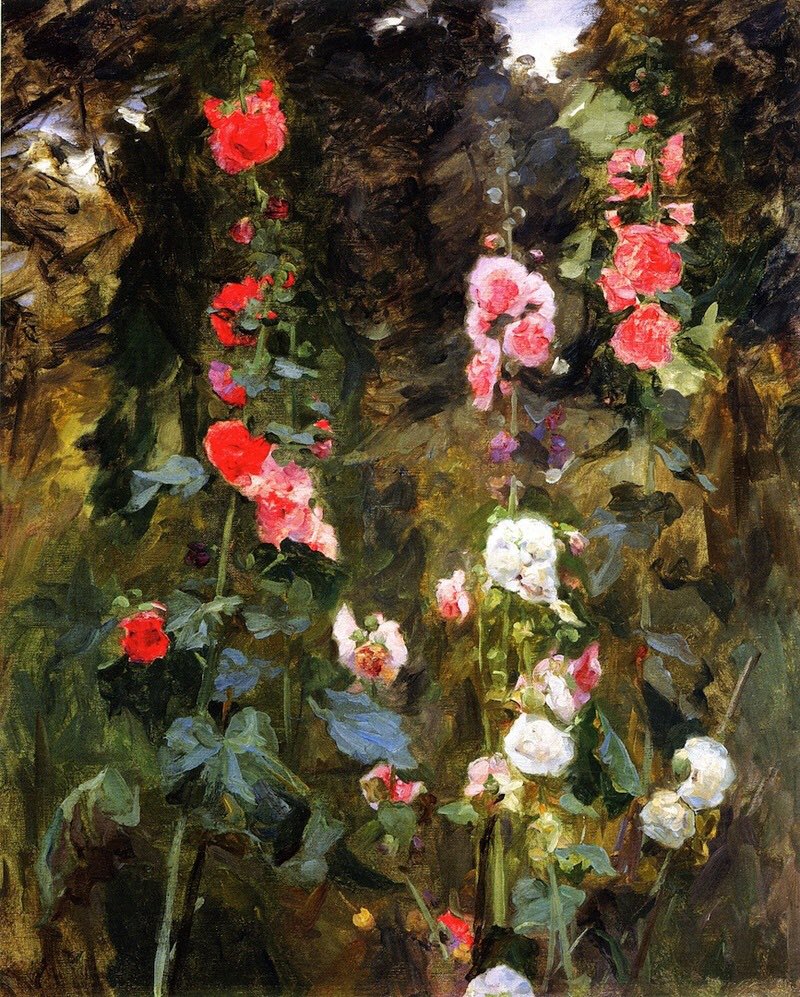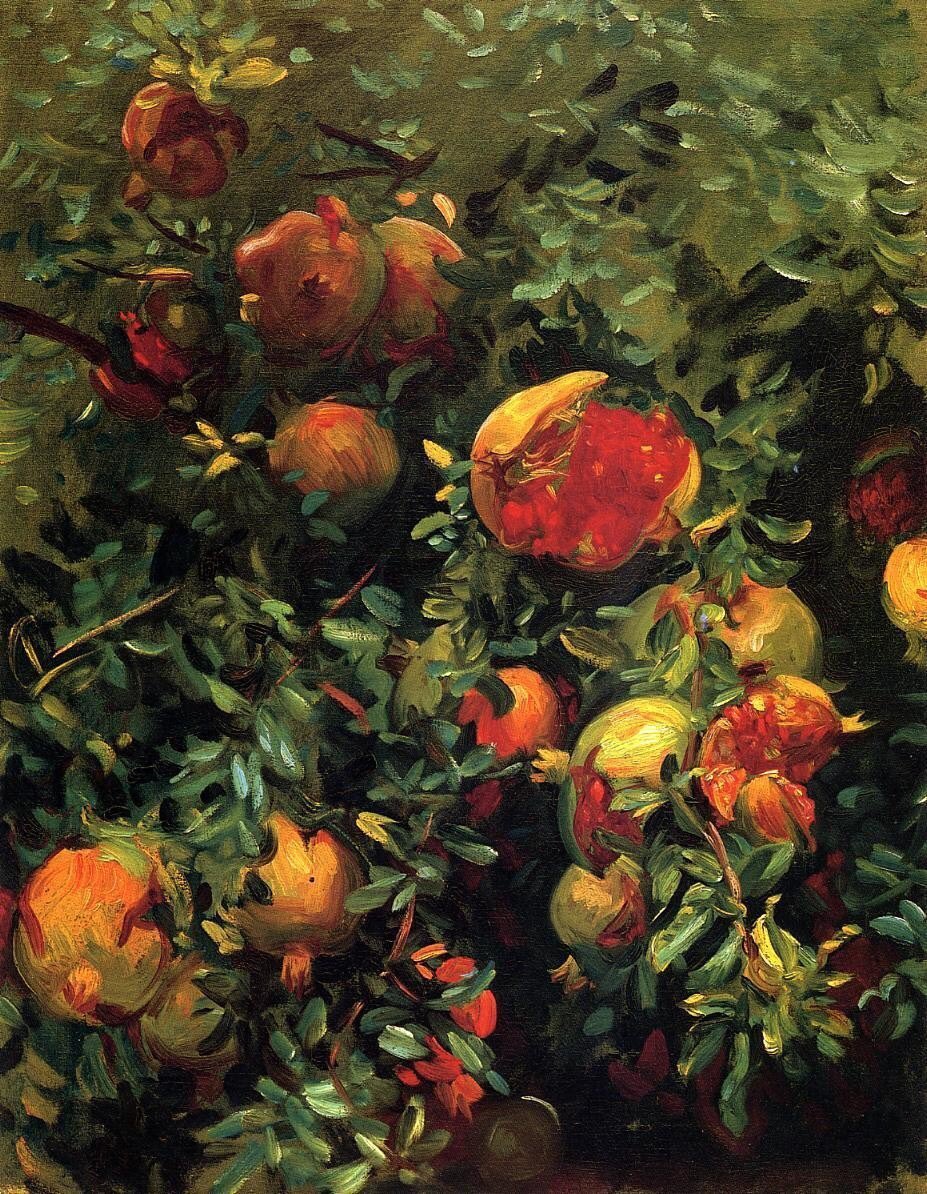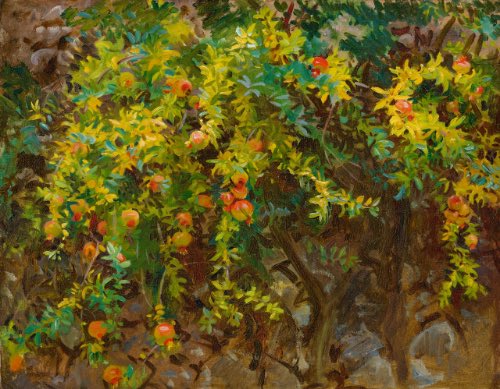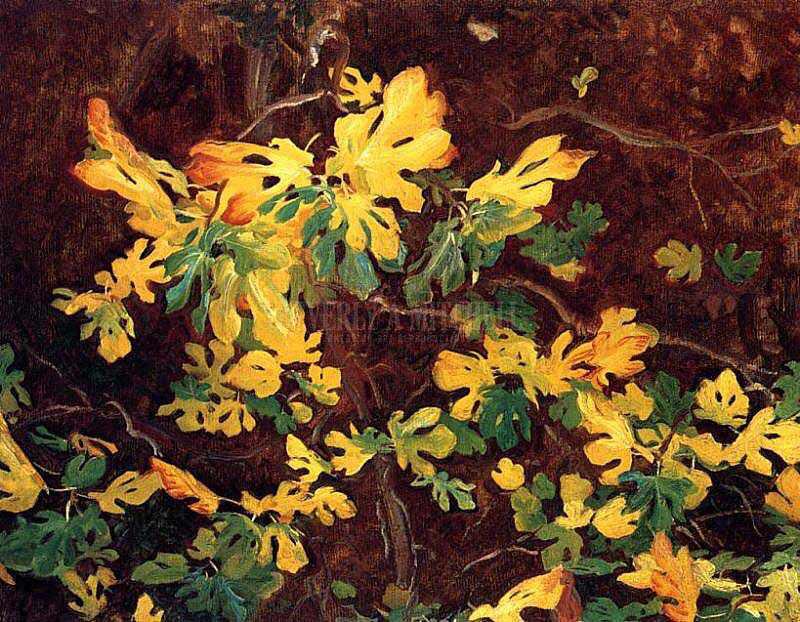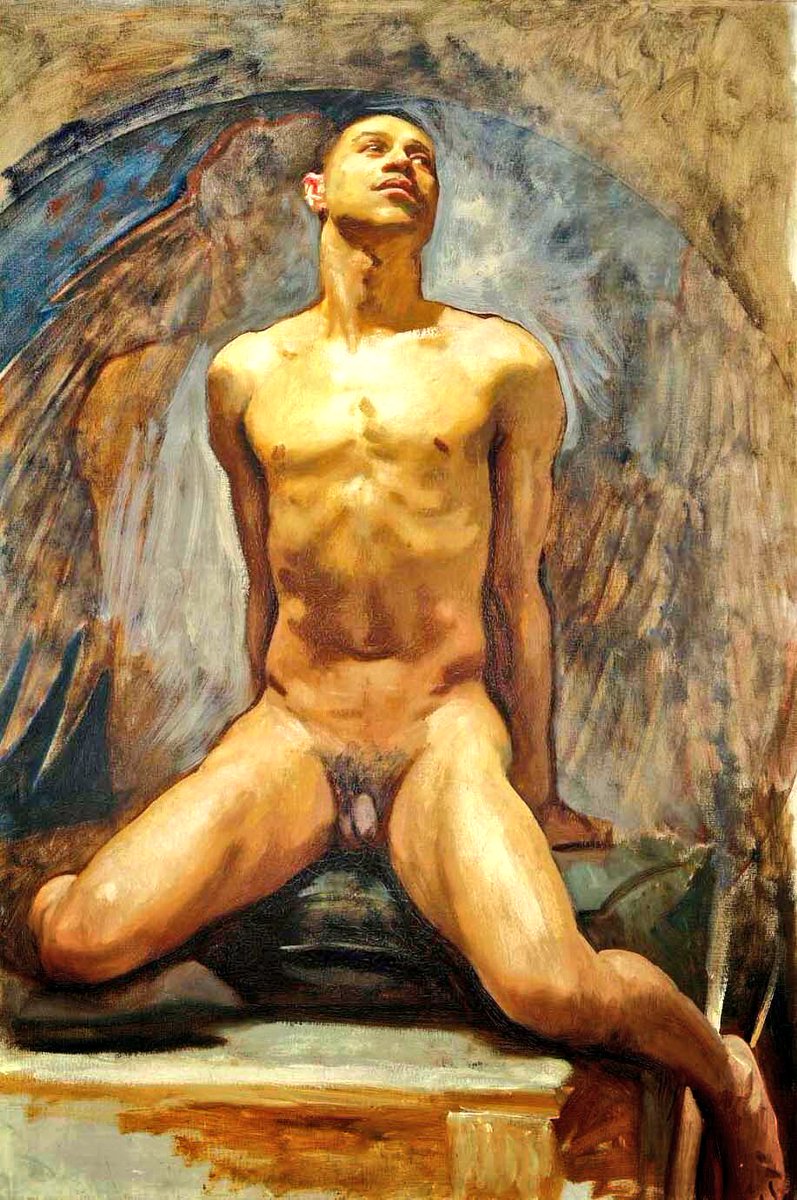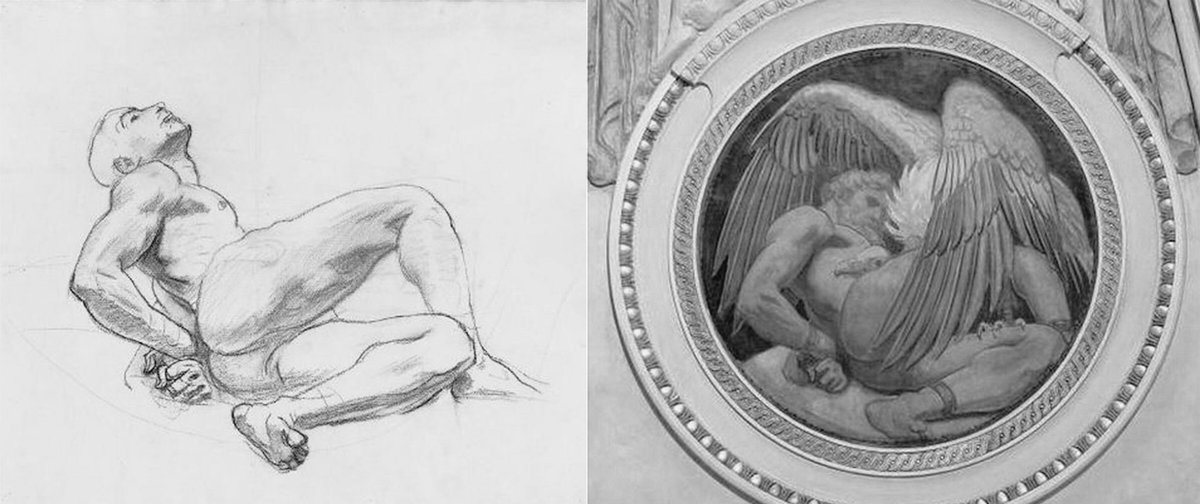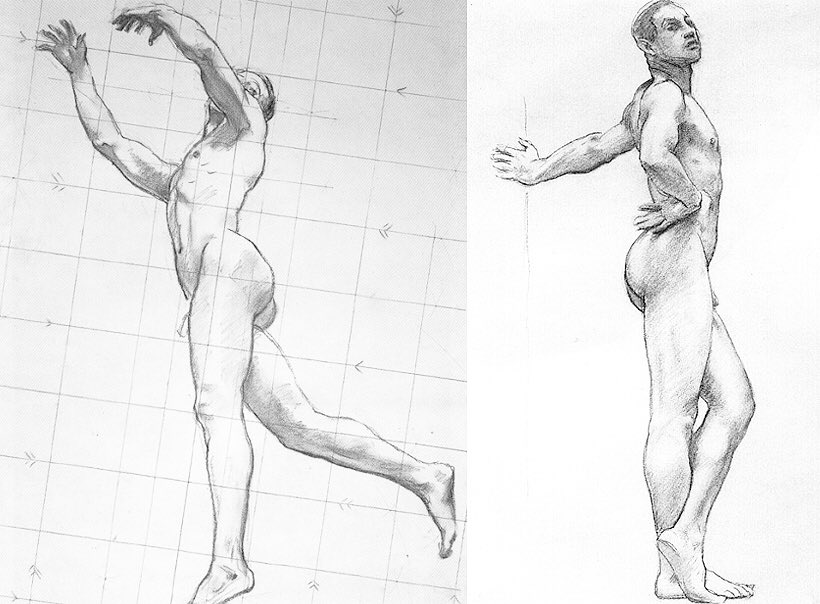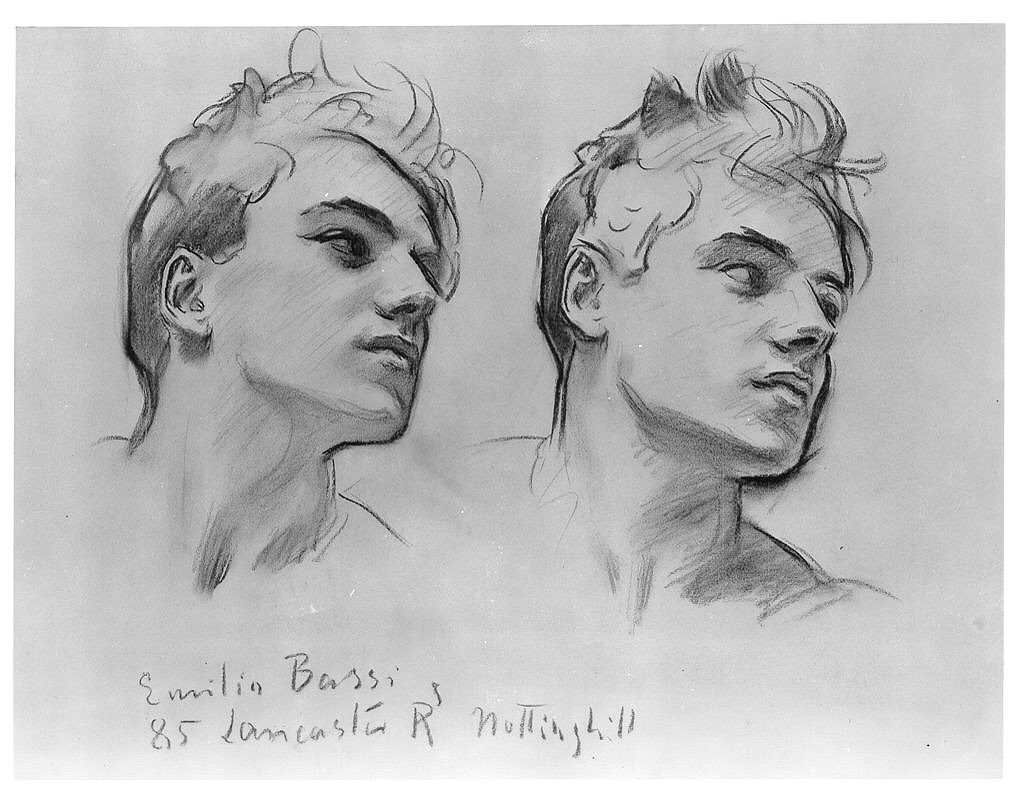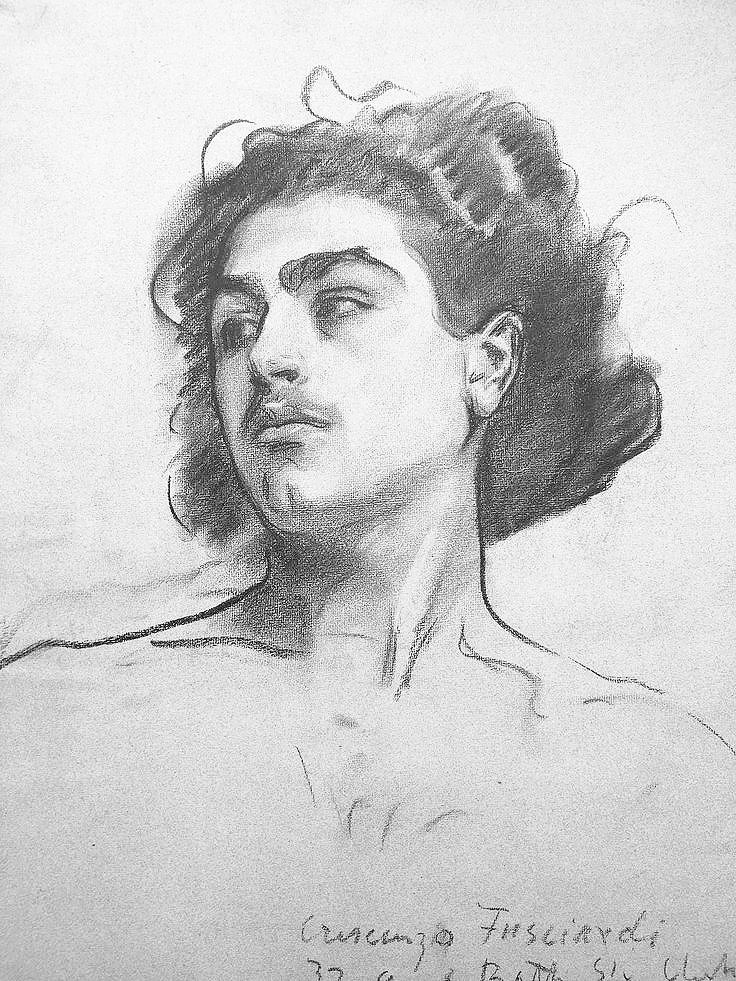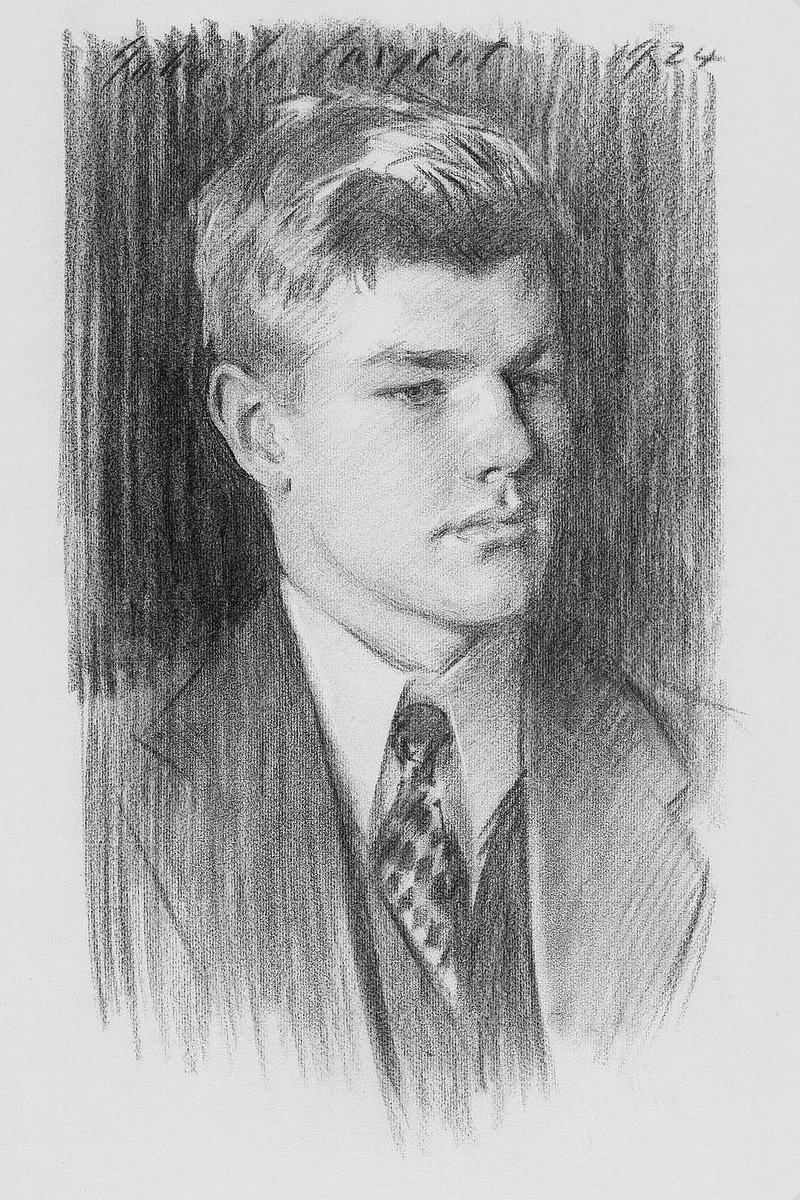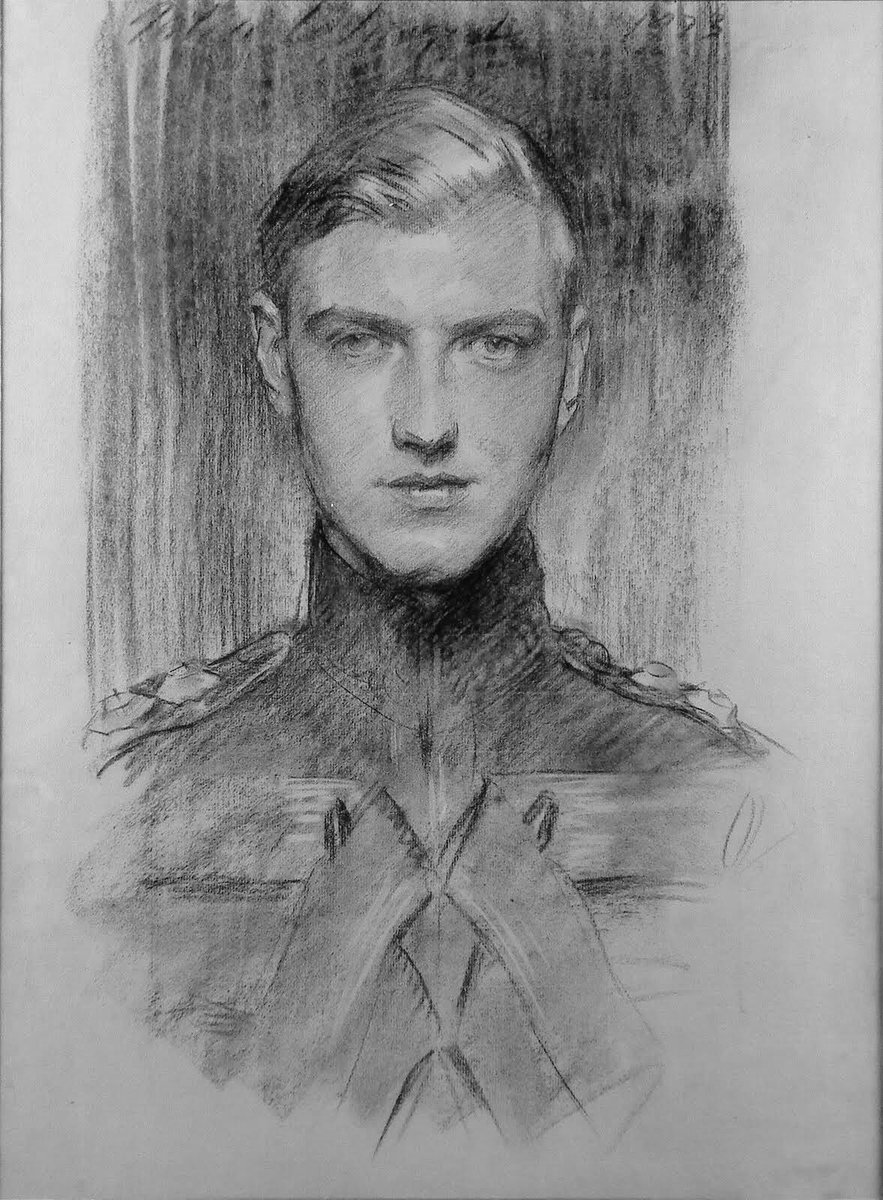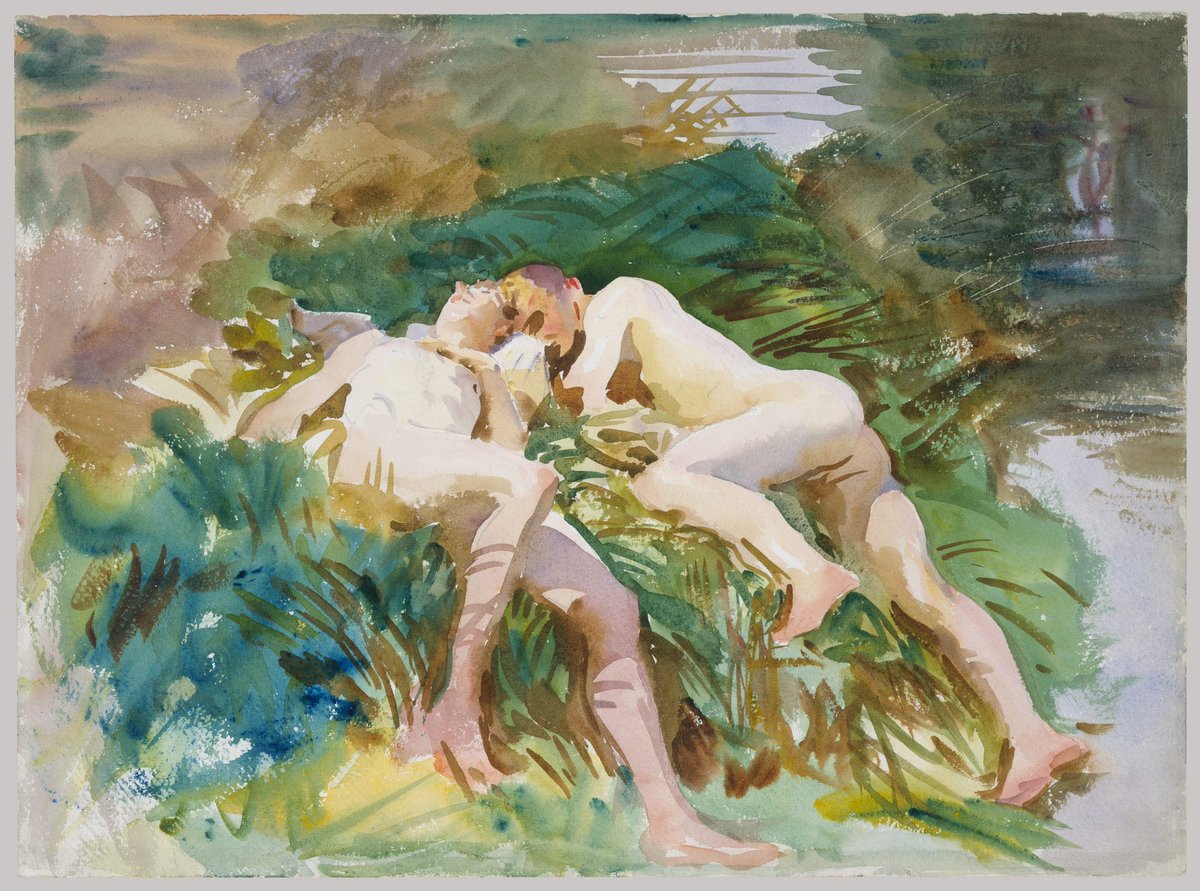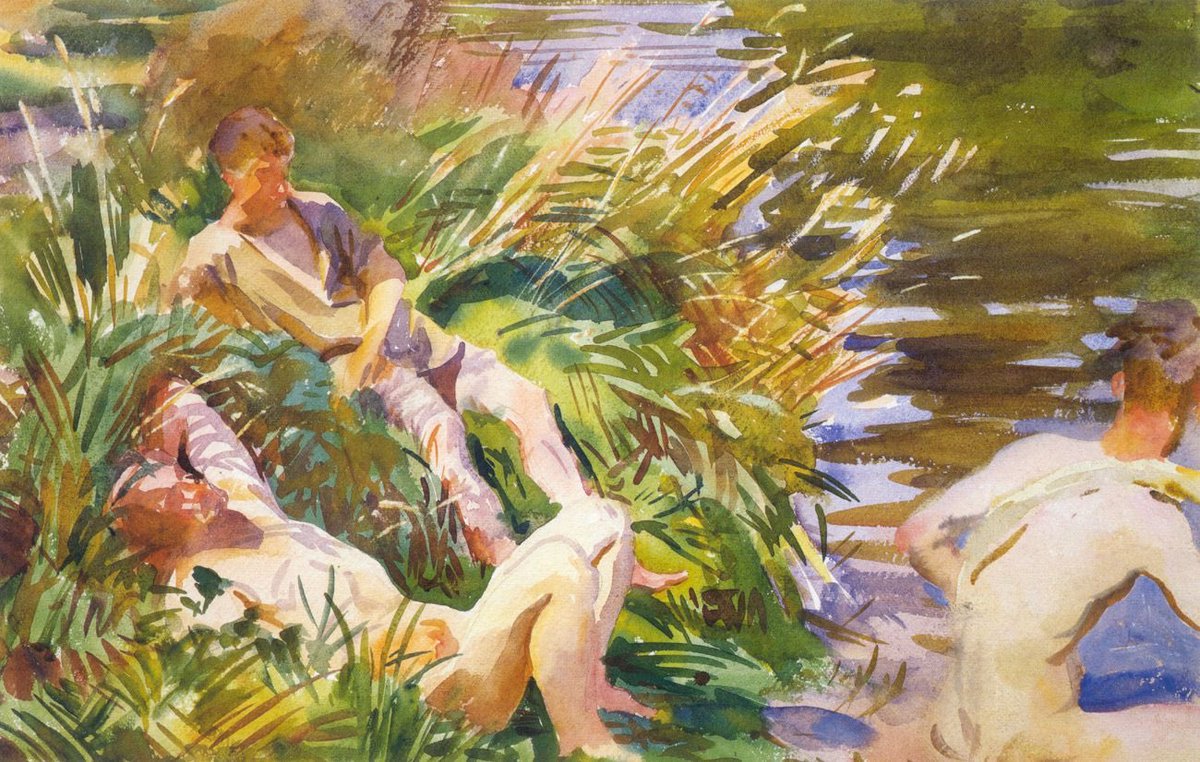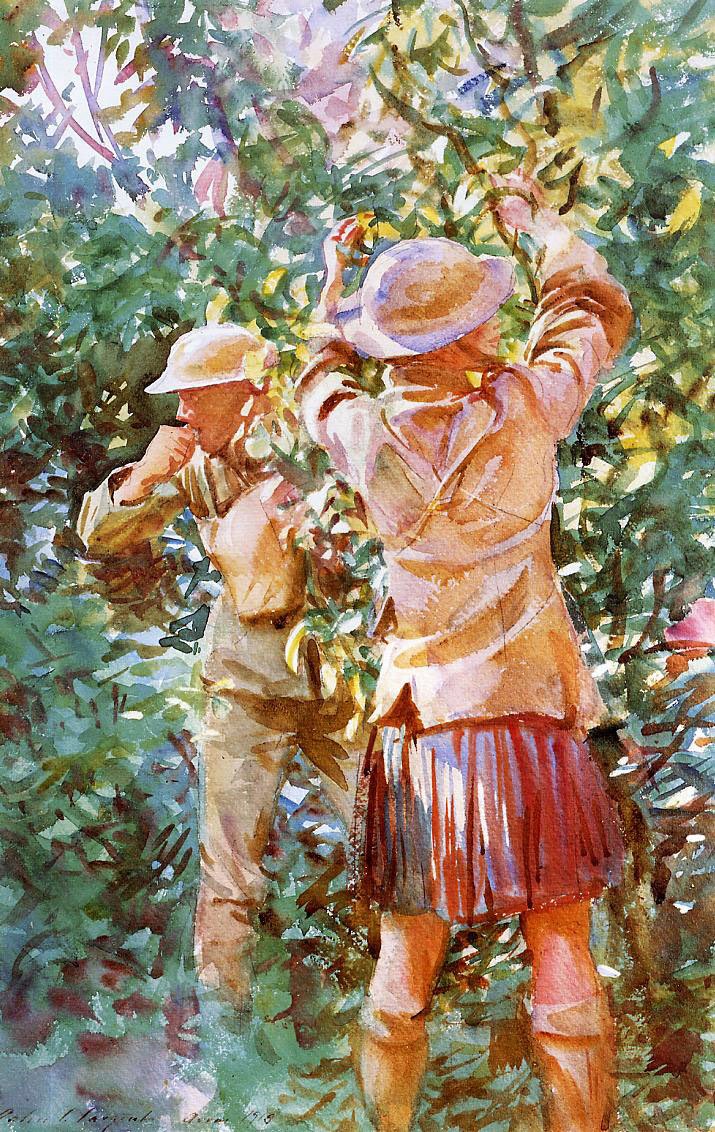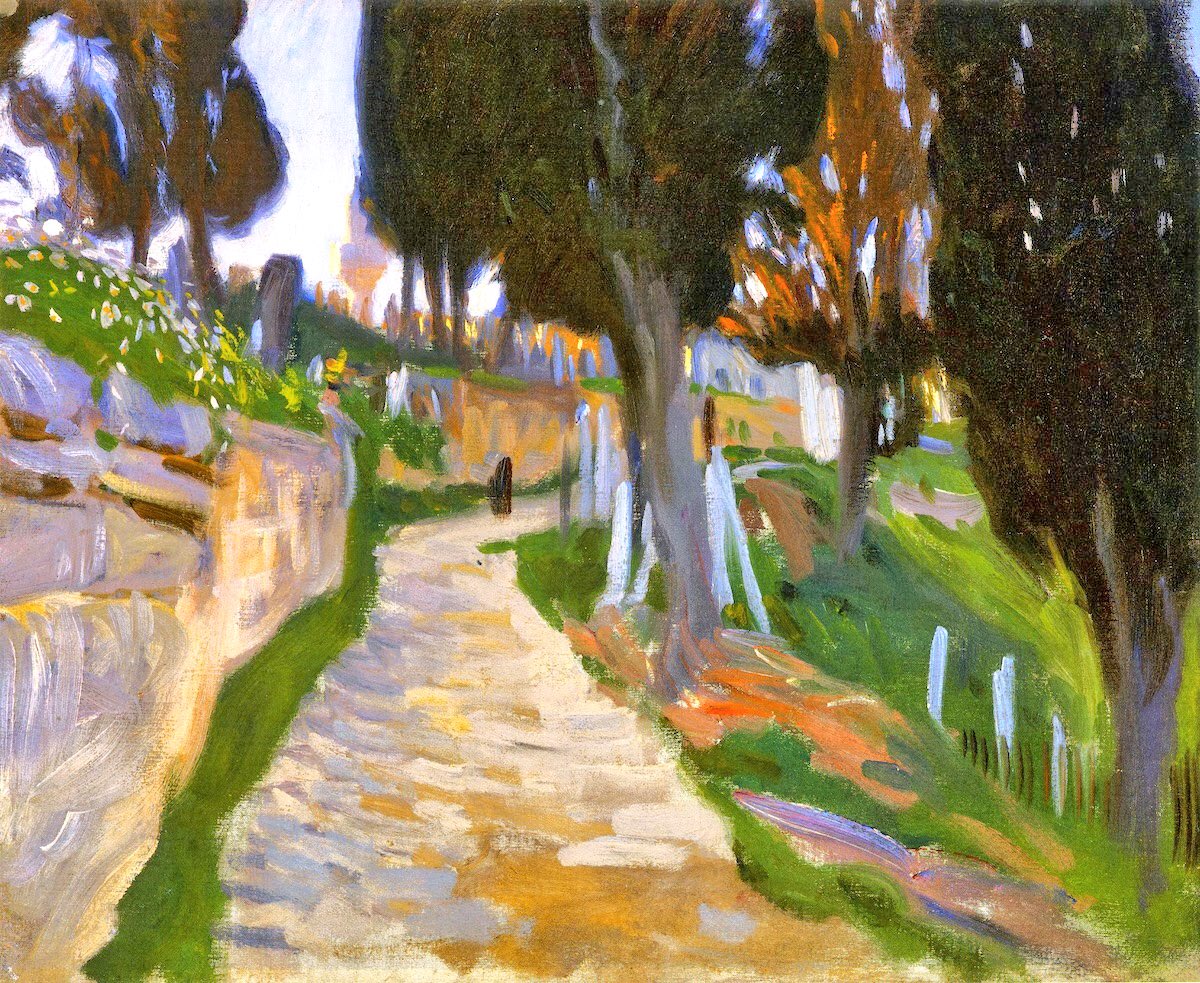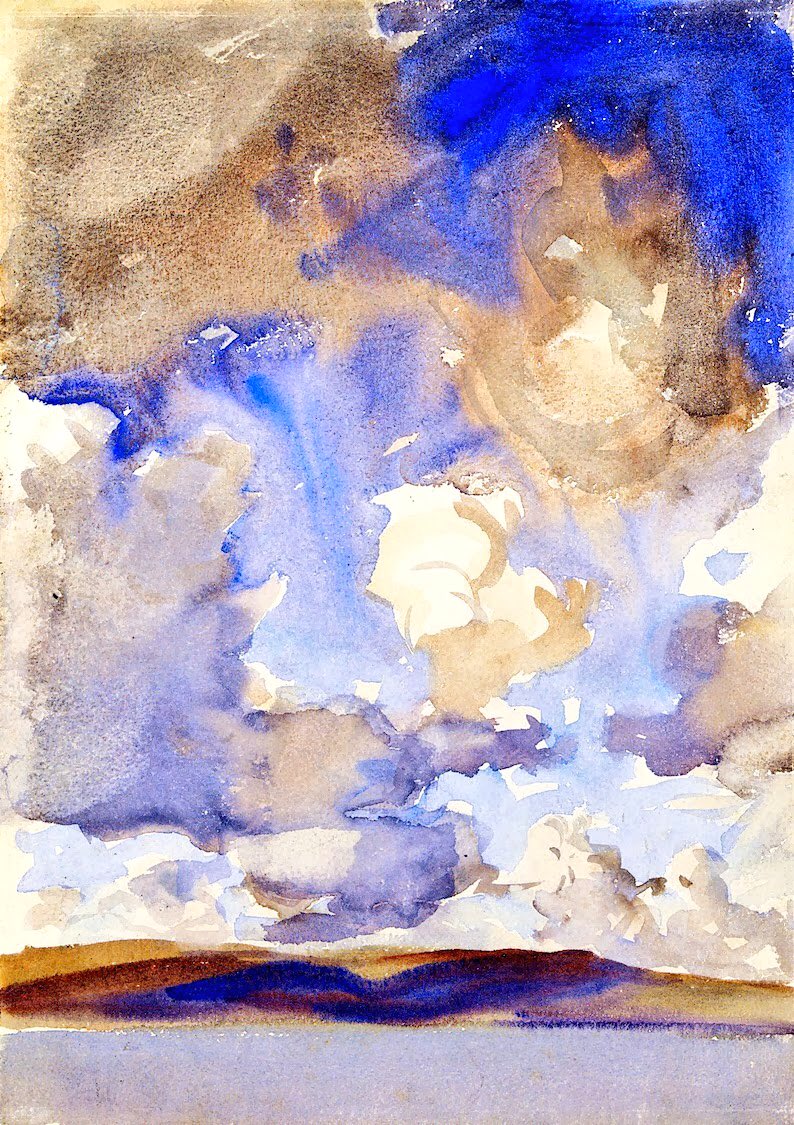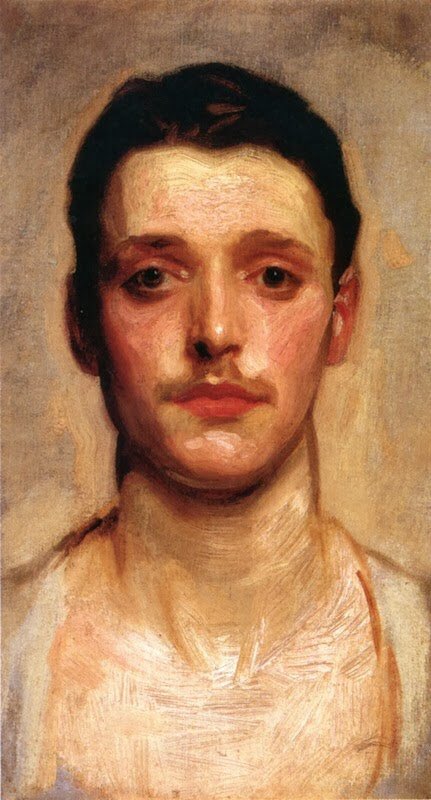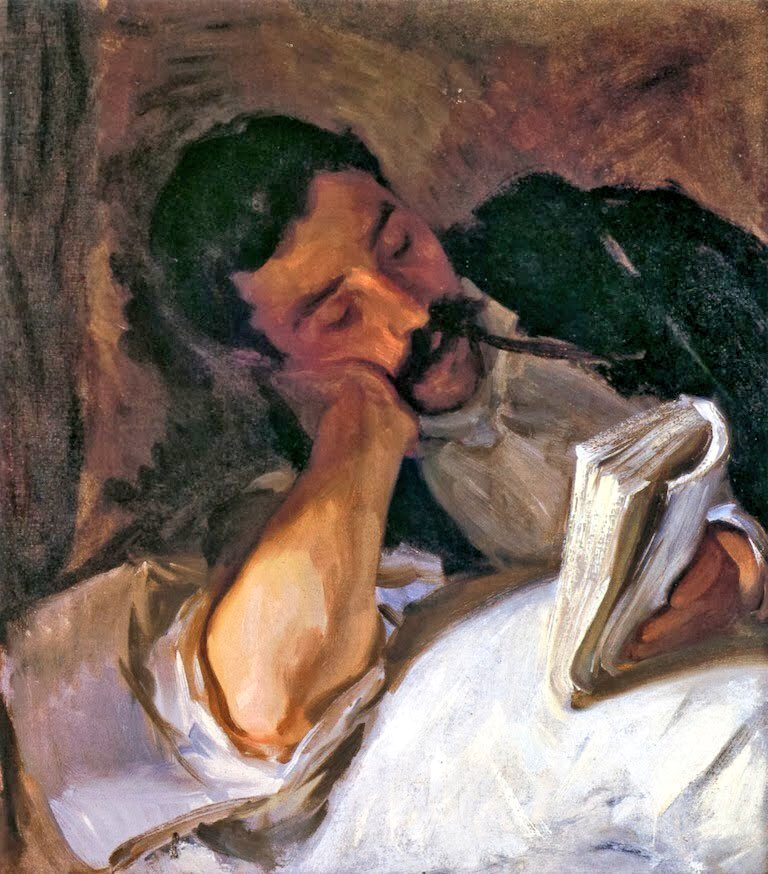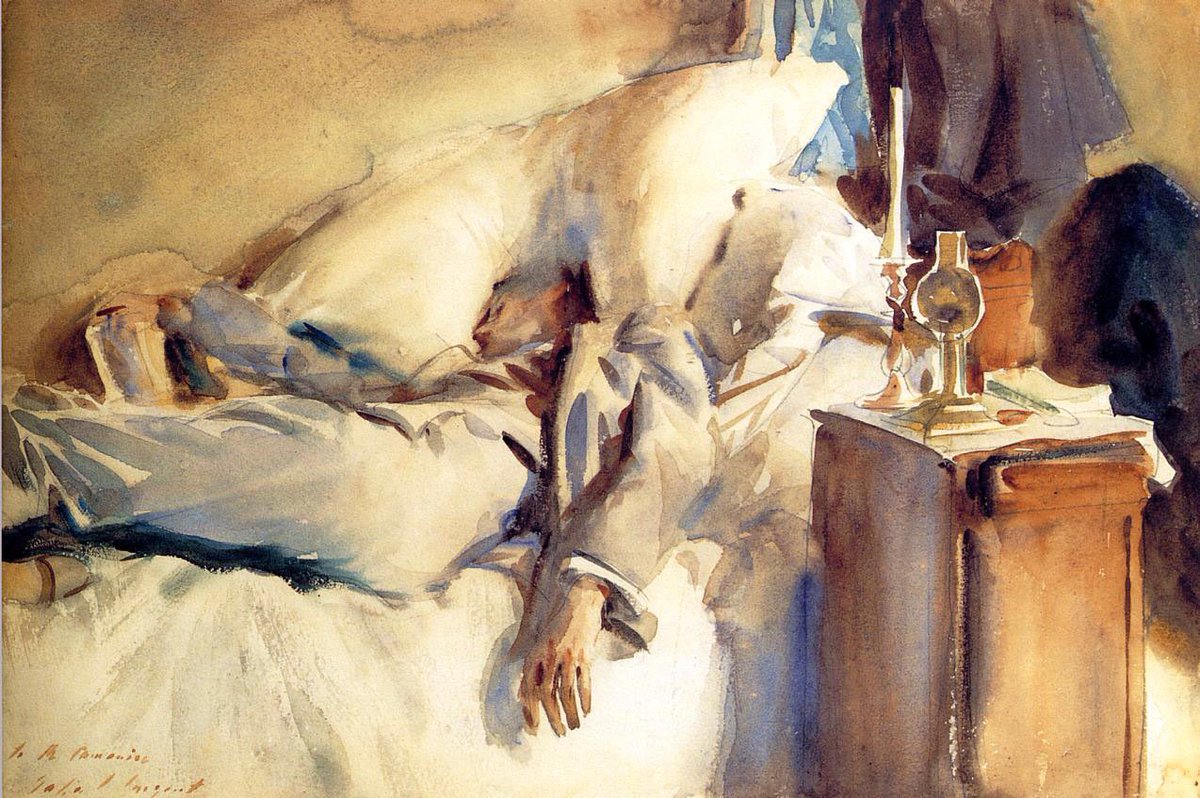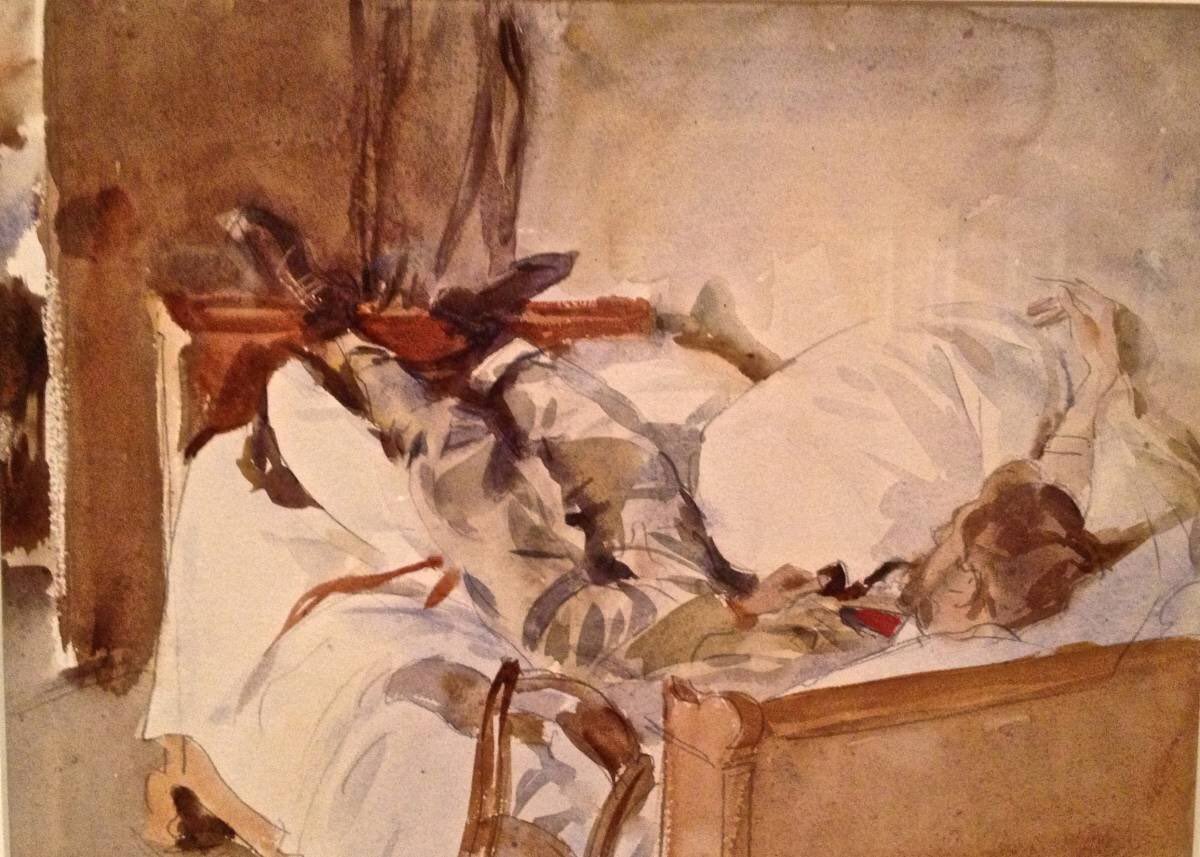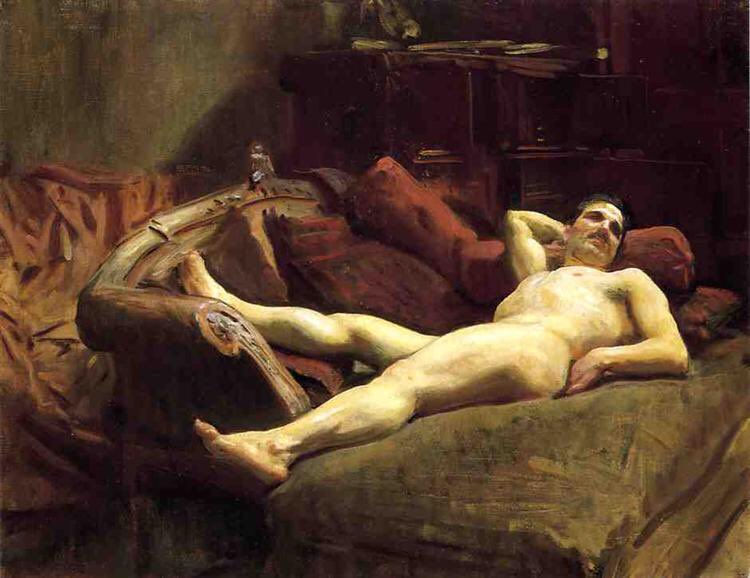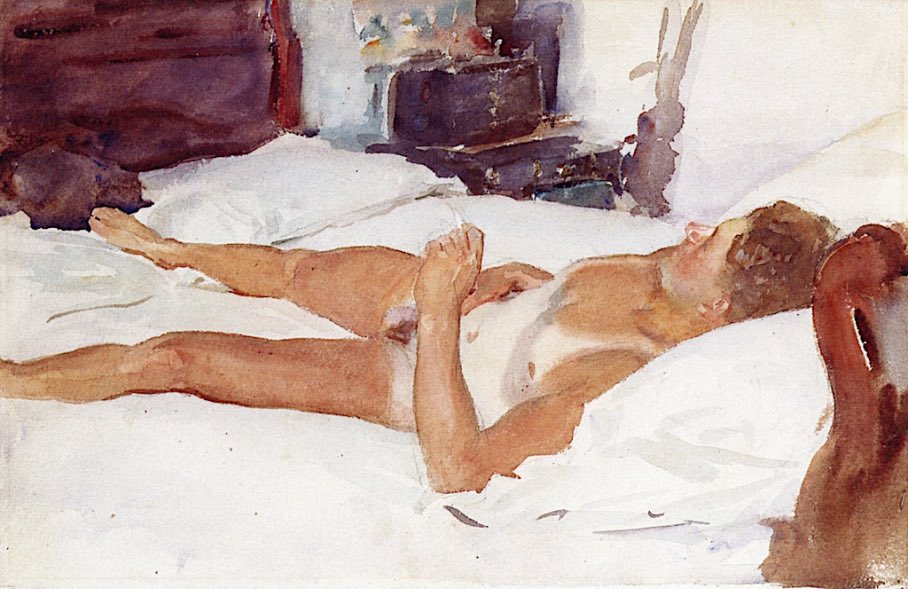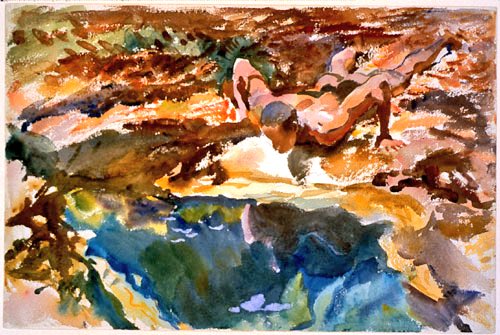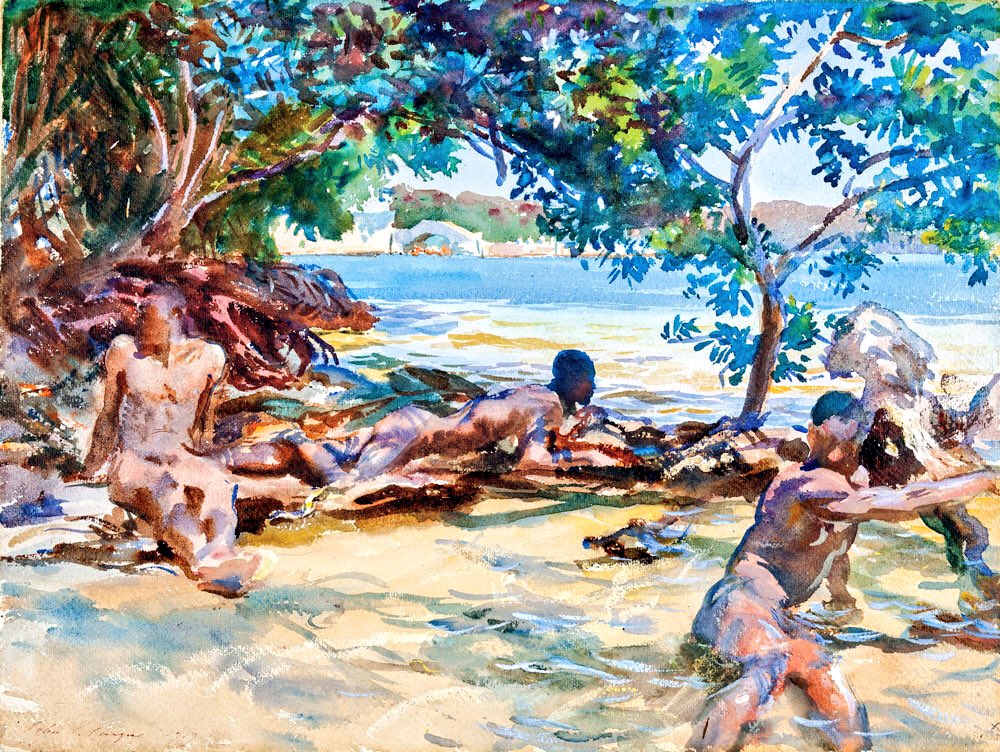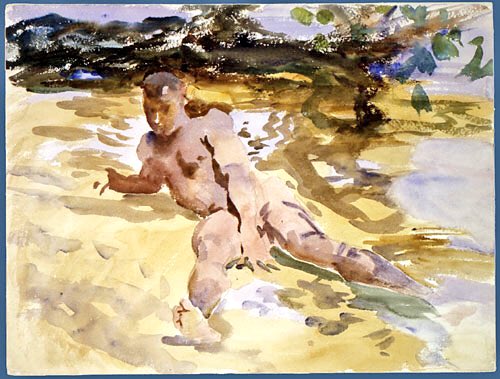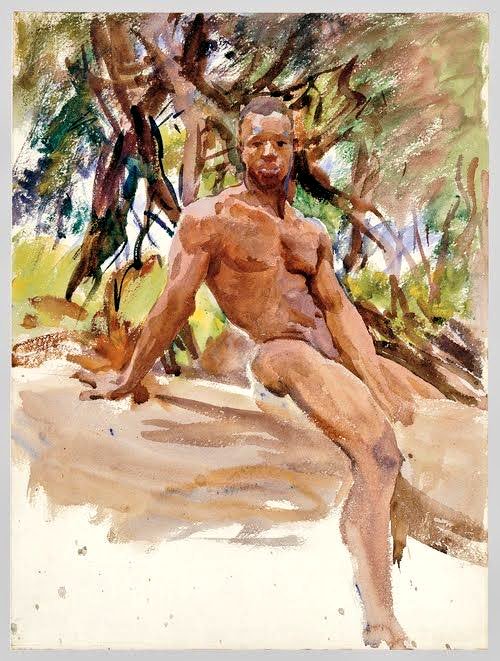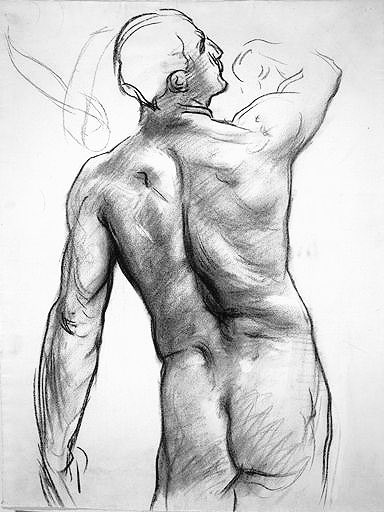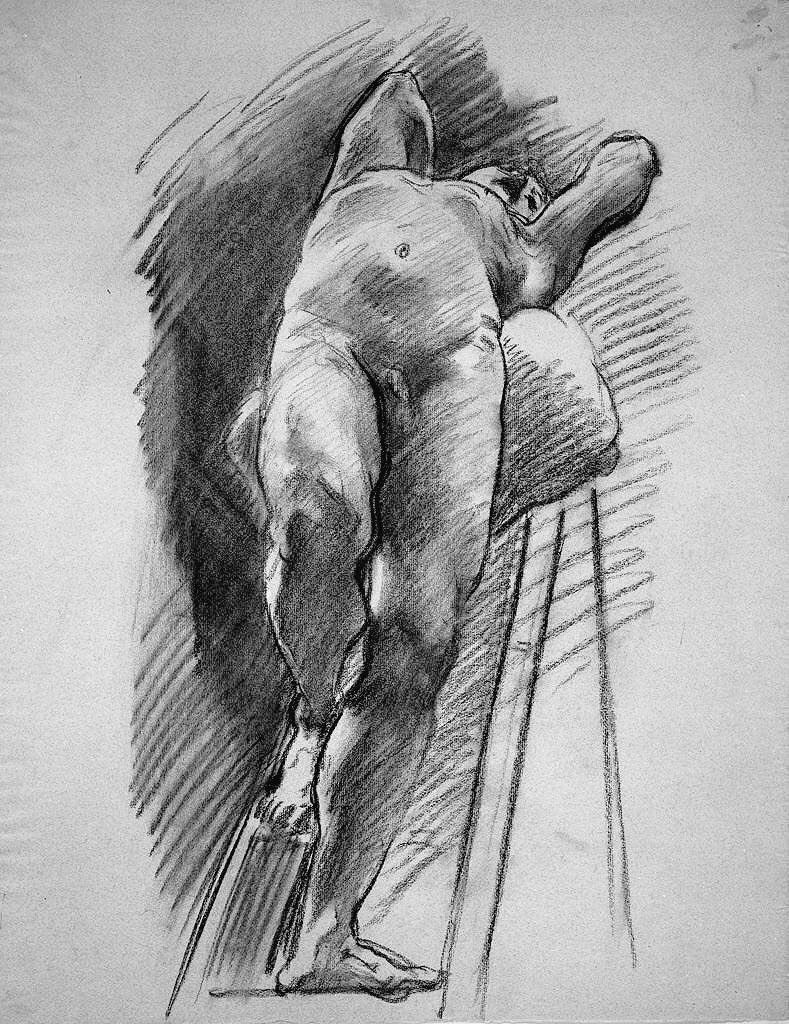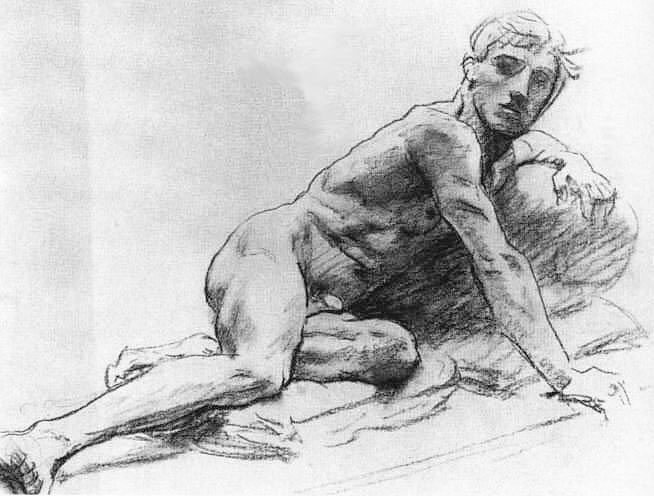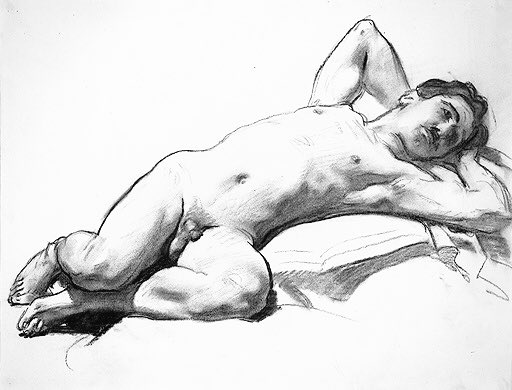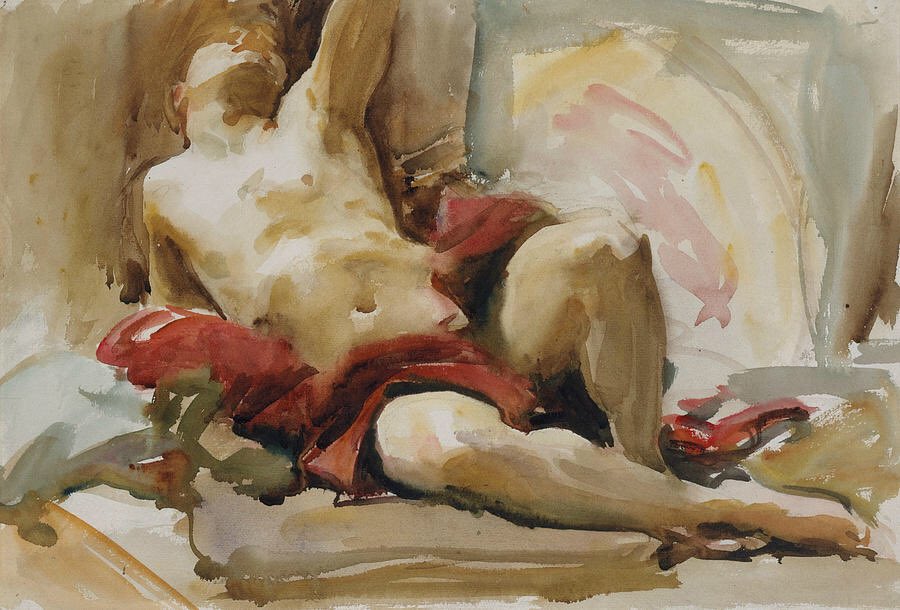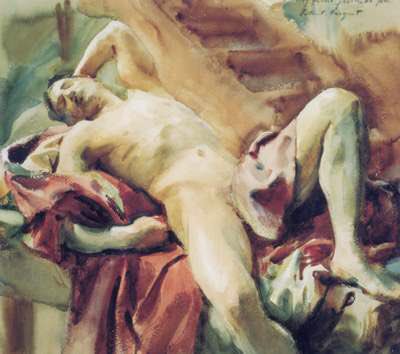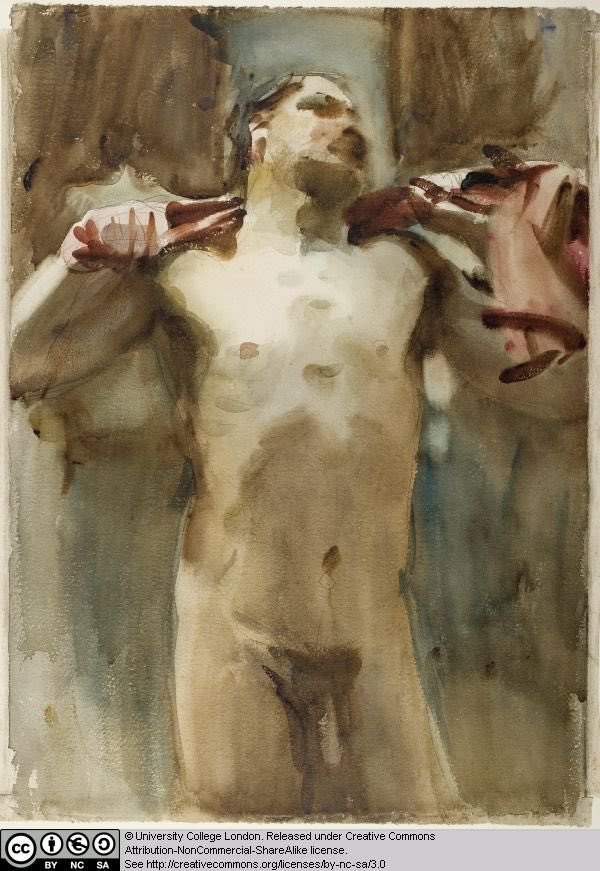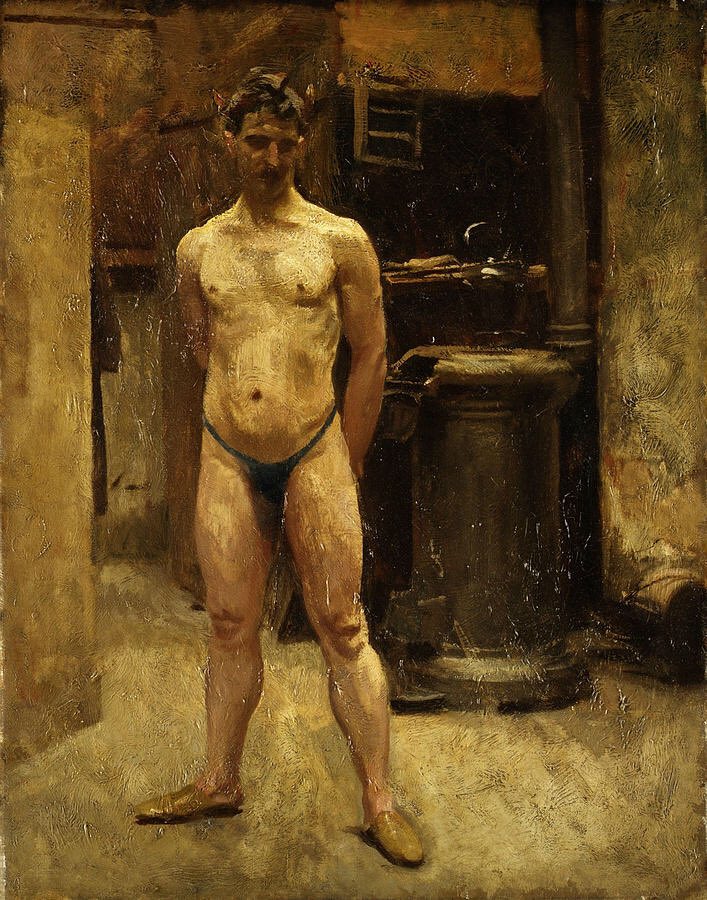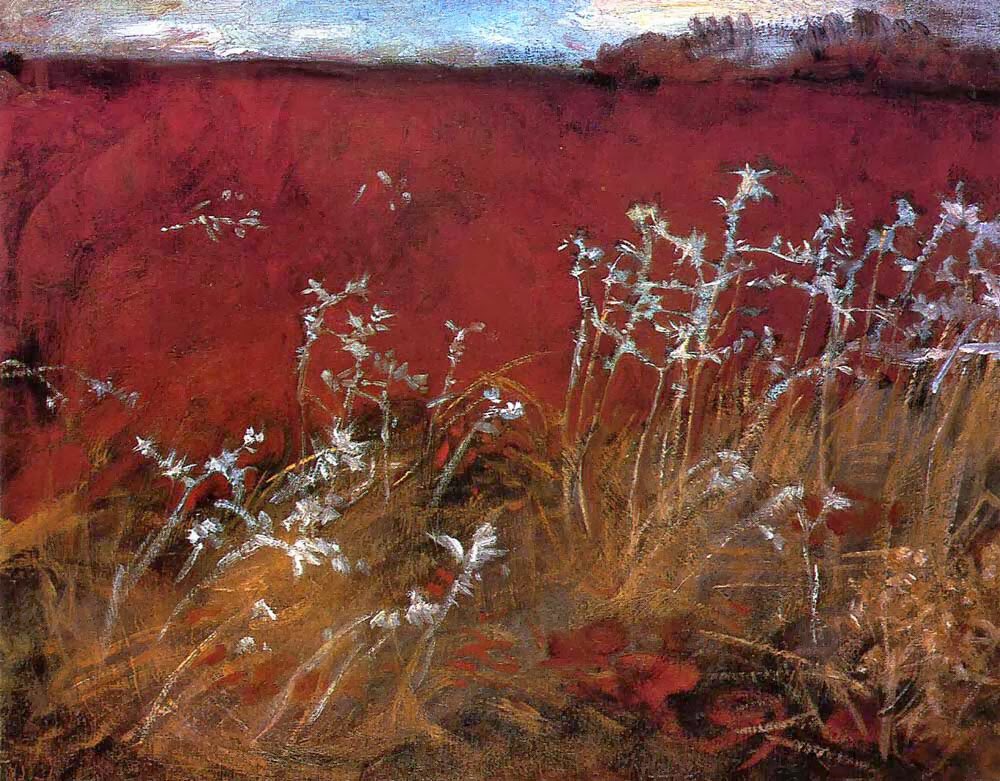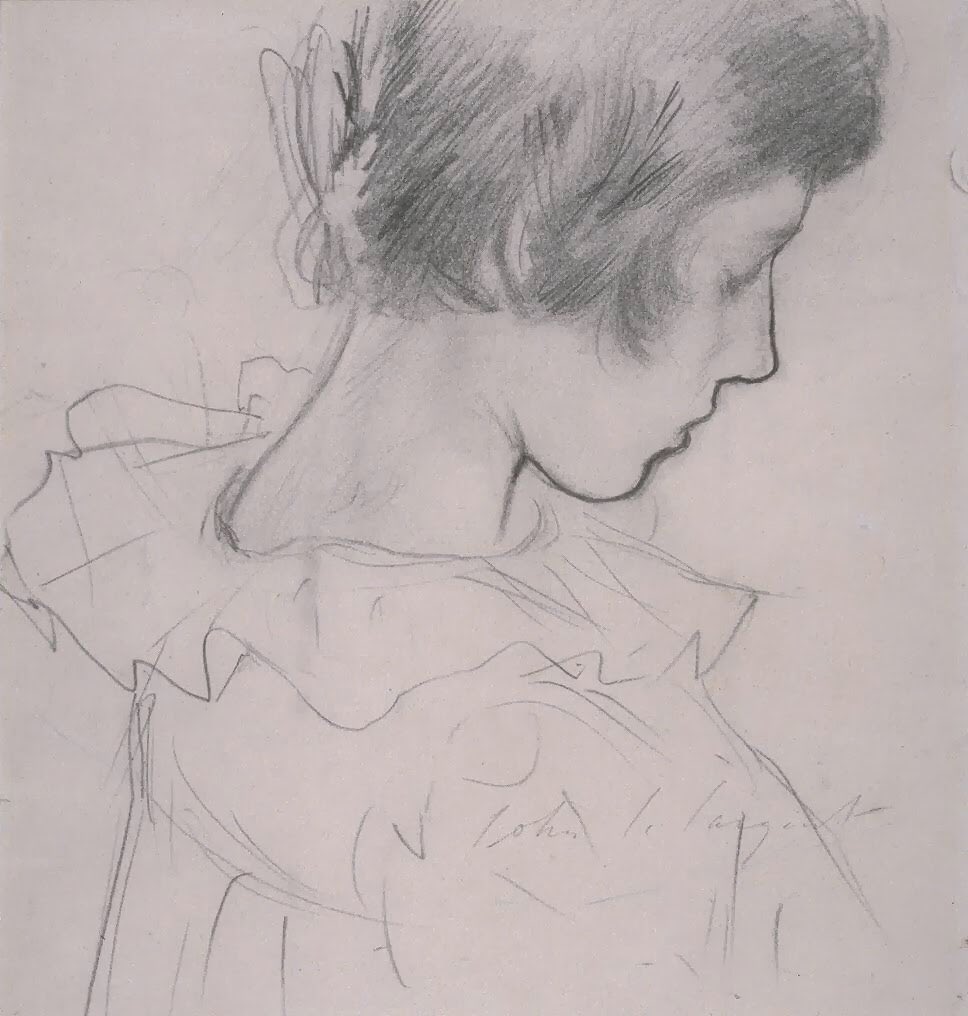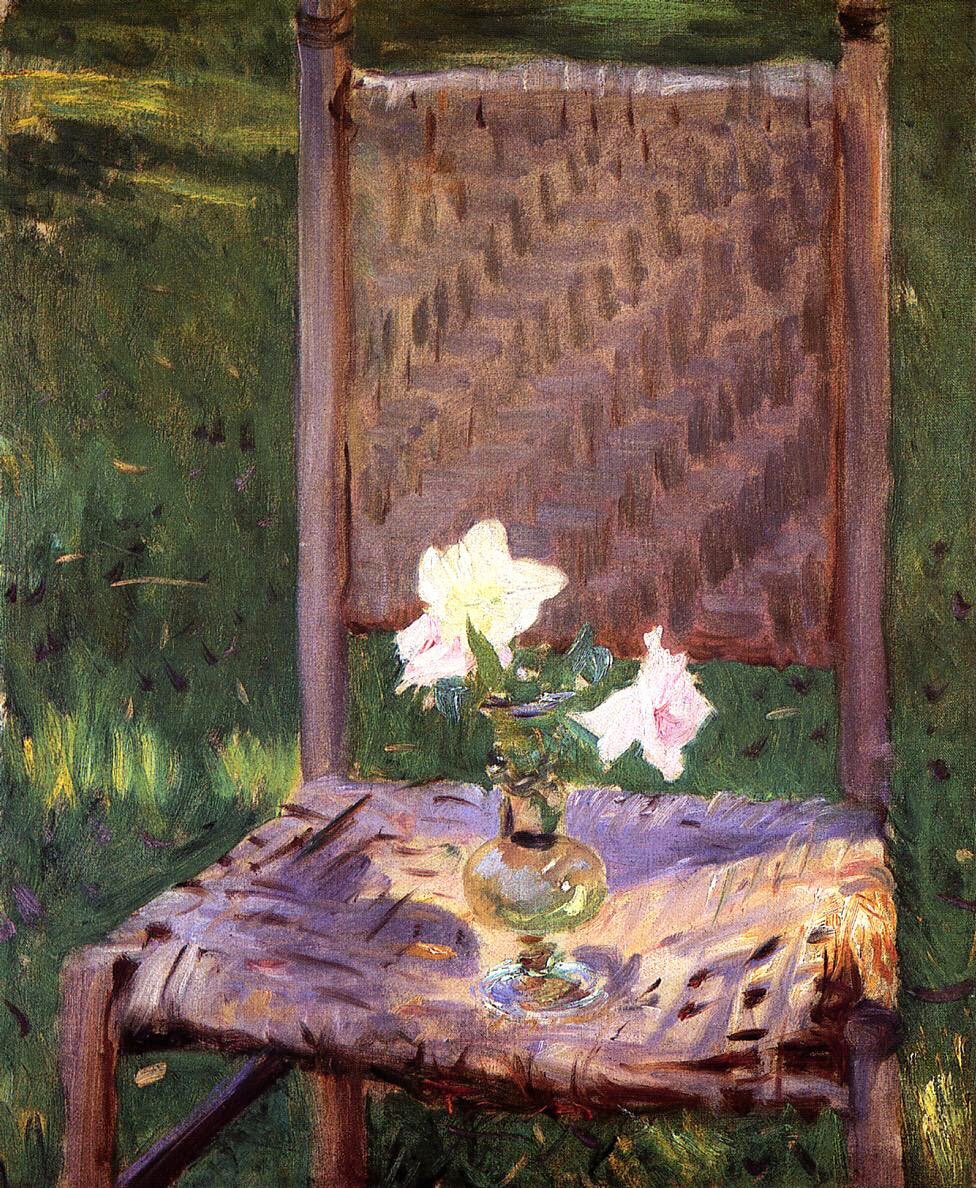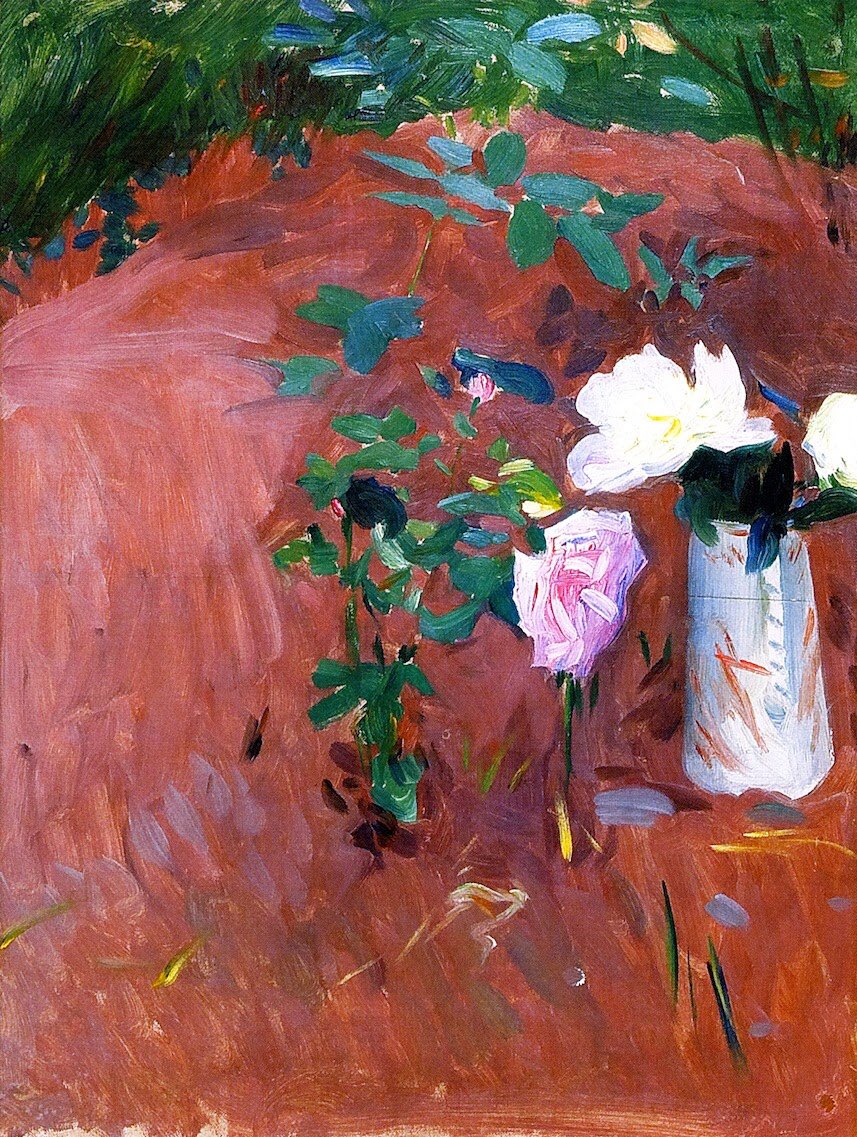Thread (Cont’d) John Singer Sargent (1856-1925) was not only the greatest society portraitist of his time but also one of the finest watercolour painters. Roses (c1901), Tommies (1918) & Self-portrait (1886) {nudity}
Sargent painted atmospheric landscapes for his own pleasure. He created for the sheer joy of doing so. Karer See (v), Mountain Fire (c1905), La Biancheria (1910) & Corfu (c1909)
He also painted his private life. Albert de Belleroche was an artist who appears to have been Sargent’s great love. They met in 1882/3. There are a number of portraits of Albert by Sargent, one of which hung in pride of place in his Chelsea home. These date from 1882/3
Sargent’s penchant for painting reposing figures has created some of the most beautifully intimate watercolours & oil sketches. Violet Sleeping (c1907-9), A Siesta (1904), A Siesta (1905) & Woman with Sun Parasol (1900)
Bartholomy Maganosco was also romantically linked with Sargent & appears in a number of his drawings. Drawing of Maganosco (c1875) & nude studies of Nicola d’Inverno 1890-1915 by the artist. His pencil portrait is a work of great tenderness
An international figure, Sargent was an inveterate traveller. It was Venice that was his favourite city & he painted it with ravishing beauty. Rio della Angelo (1902), The Bridge of Sighs (c1903-4), Santa Maria della Salute (1904) & the Piazetta (c1904)
Sargent’s portraits of women & children are well known yet his male images have a rare poetic intensity employing the ‘male on male gaze’. Study of a Spanish Man (c1880), Edward Vickers (c1884) & Two Italian Studies (1874-80 & c1878)
He enjoyed painting gardens including that of the Millet’s in England (1886), the Village of Calcott (c1888), In the Orchard (1886) & Villa de Marlia (1910). His images suggest a carefree life of effortless beauty lolling on grass
His studies of male figures are a tour-de-force in painterly skill as well as powerfully sensual (& due to having had to be hidden, have kept from fading). Young Man in Reverie (1878) & Male Model Reclining (c1900) & Model Studies (1904)
Sargent had a knack of viewing the places & people he visited with empathy, which raised them from tourist images to art. He visited Egypt (1890-1). Raising Water from the Nile, Egyptian Woman with Earrings, A Bedouin Arab & Egyptian Woman
He also created a series of stunning watercolours & oil sketches of the countryside. These included his study of Blue Gentians (1905), Bed of a Glacier (1904), A Stream over Rocks (1907-8) & A Mountain Stream (1907)
Olimpio Fusco was also linked romantically with the artist. His Italian good looks clearly inspired Sargent. Here is his portrait & a more domestic scene of Fusco in bed. This choice of subject has raised him from a society portraitist to a cutting-edge artist for the time
Sargent’s plant paintings take an impressionist love of colour & integrate his own dynamic & exquisite approach. Hollyhocks (1886), Pomegranates (1908) & Fig Tree (1908). His love of colour is readily apparent
One of the key men in Sargent’s life was Thomas E McKeller. He was a bellhop in Boston when the artist found him. Sargent was one of the first to have a male muse. McKeller’s torso & face regularly appears in his work. McKeller (1917), frescoes & studies.
A feature of his success was that he was able to choose who to depict, as he was financially independent. It’s notable he drew many handsome men. Emilio Bassi (c1917), Crescenzo Fusciardi (c1900s), Harold Irving Jnr (1924) & Robert Gould Shaw (1923)
Whilst documenting the Great War, Sargent took time to paint the soldiers from an intimate & sensual perspective - which was unique for the period (1918). These works, harking back to an Arcadia, are bittersweet in that the men were to become mere cannon fodder.
He combined a visual curiosity with a fascination with colour & light. Graveyard at Constantinople (1891), Clouds (1895), Head of A Young Man (1900) & Man Reading (c1901-7)
Another feature of Sargent’s work was to paint his private life both in the studio & his bedroom. He loved painting reclining figures & here we have fellow artists exhausted after work, a relaxed model & a lover. The latter is an unprecedented image for the time.
In 1917 he visited the Florida estate of a rich gay couple & arranged the workers into Arcadian images with a gay sensibility. Again, these are unprecedented pictures in Western art both in creating a same sex paradise & in choosing to do so with African-American sitters.
He was a superb draughtsman in depicting ‘Academies’ - traditional studies of the nude in the studio in pencil & charcoal. Here are some of his works in this area from throughout his career. In recent years such studies have enhanced his reputation in their vivacity
He also created oil & watercolour Academies that are both keen-eyed depictions of the human body as well as sensual reactions to form. These were for his own private collection & would have shocked if exhibited. They are now seen as revolutionary art (Three from c1904 & 1870s)

 Read on Twitter
Read on Twitter
